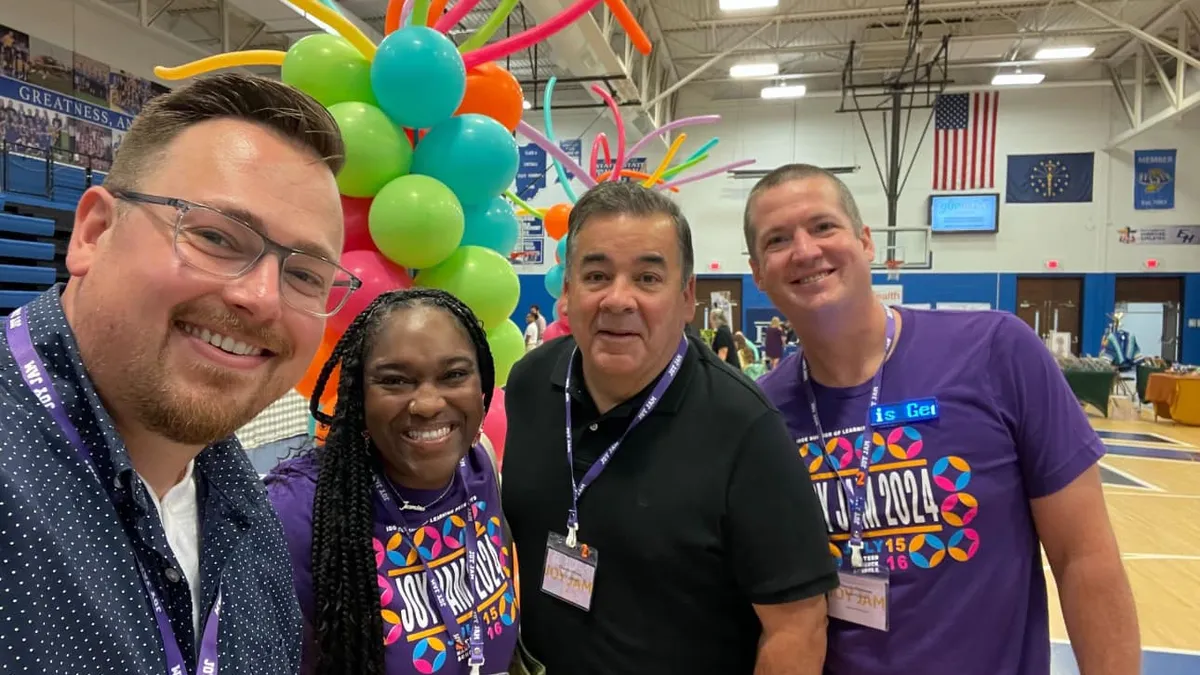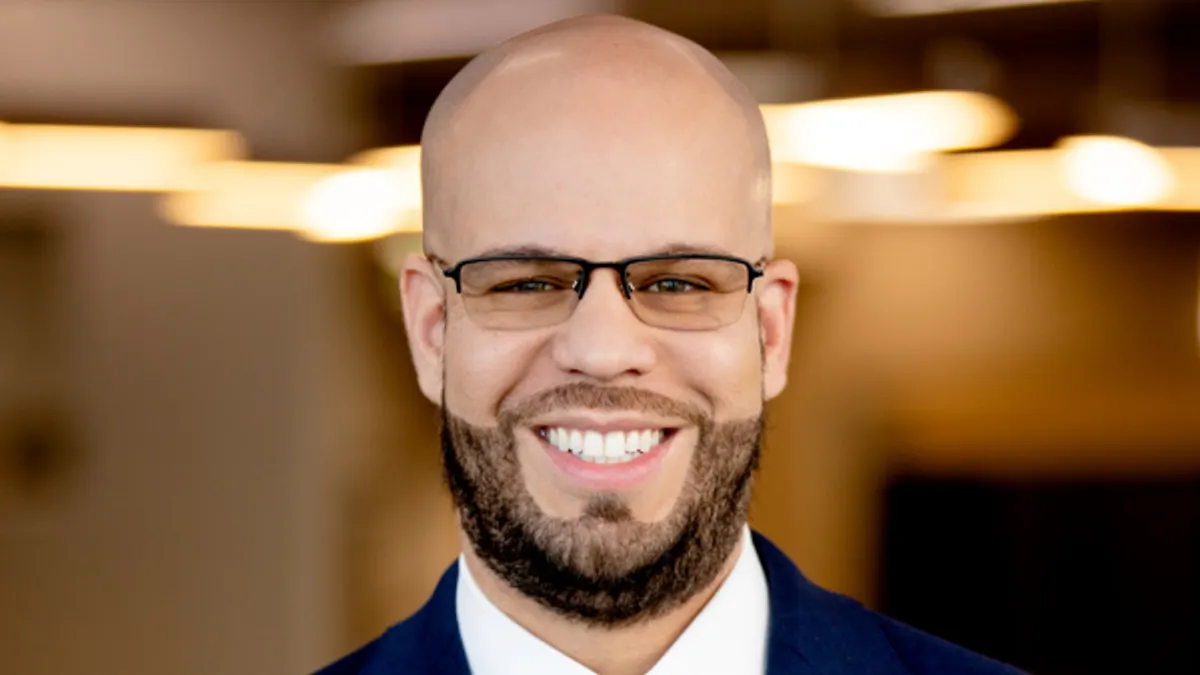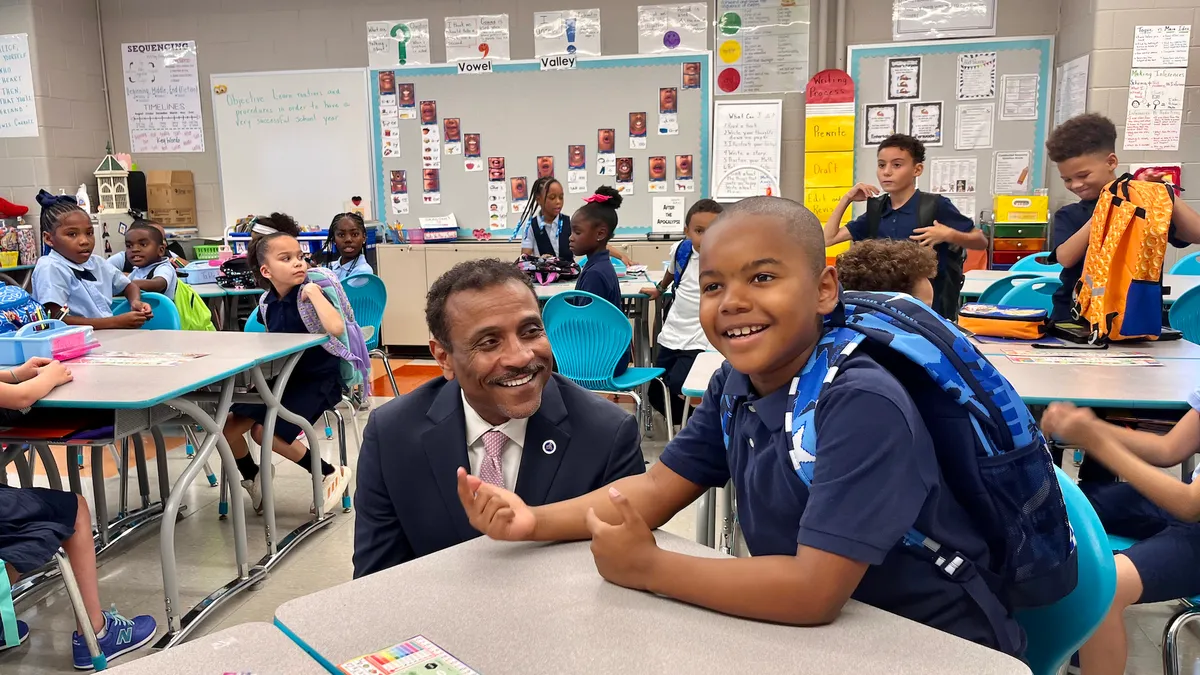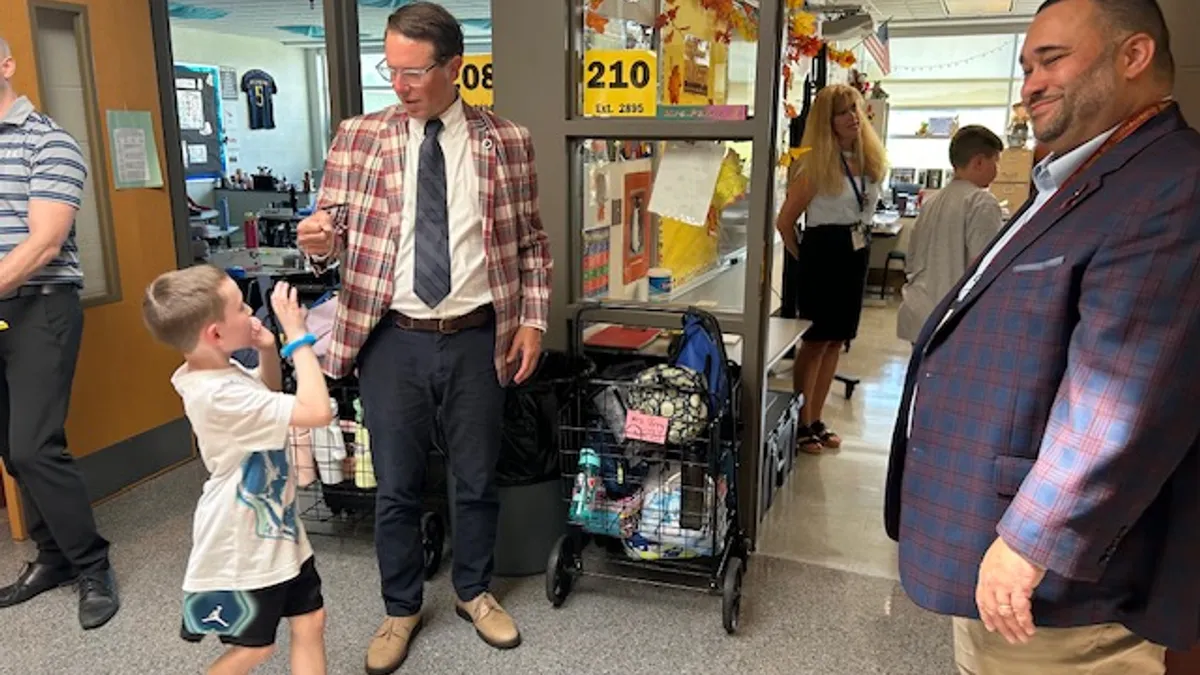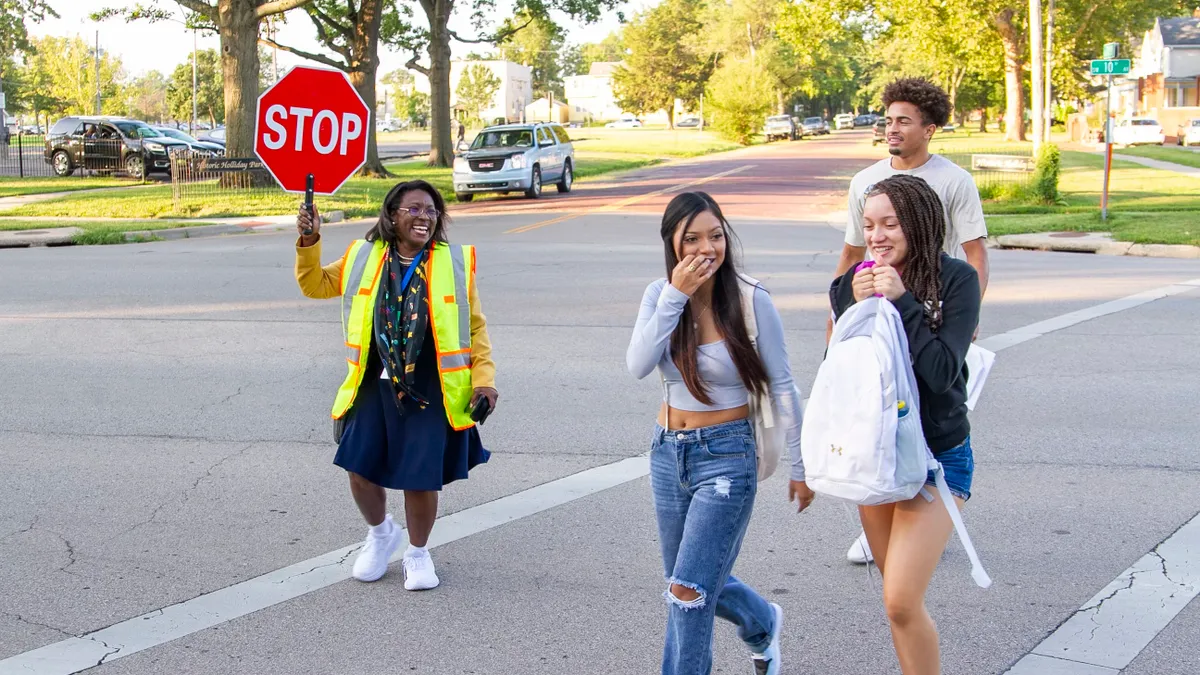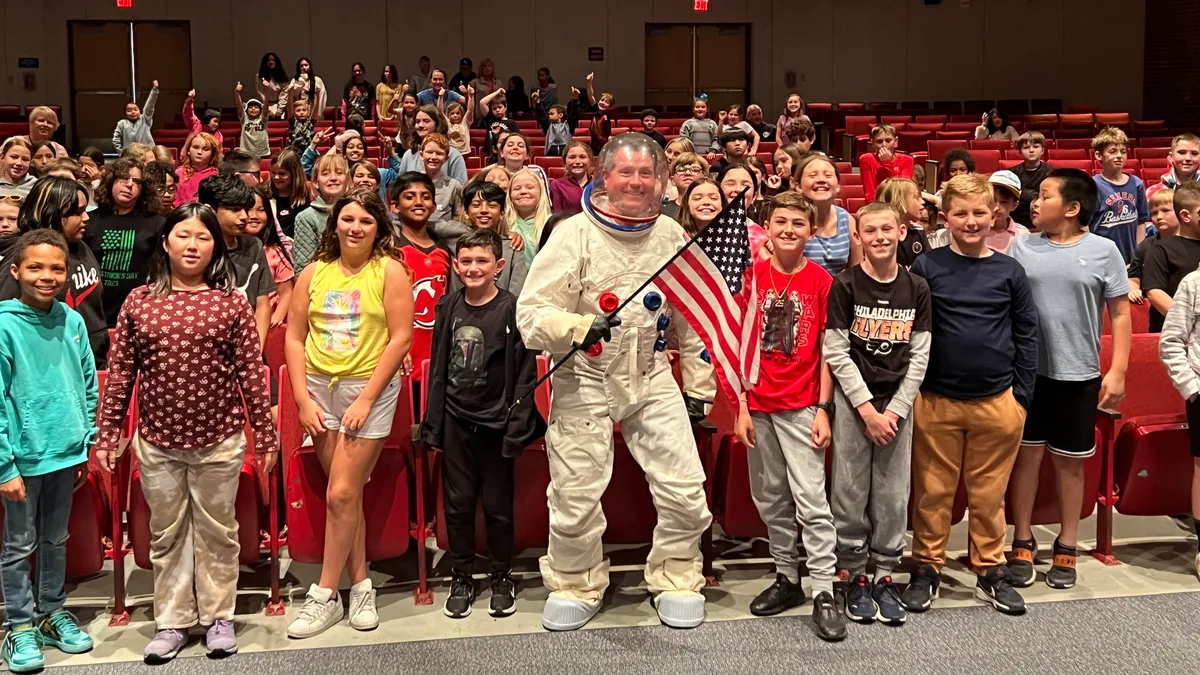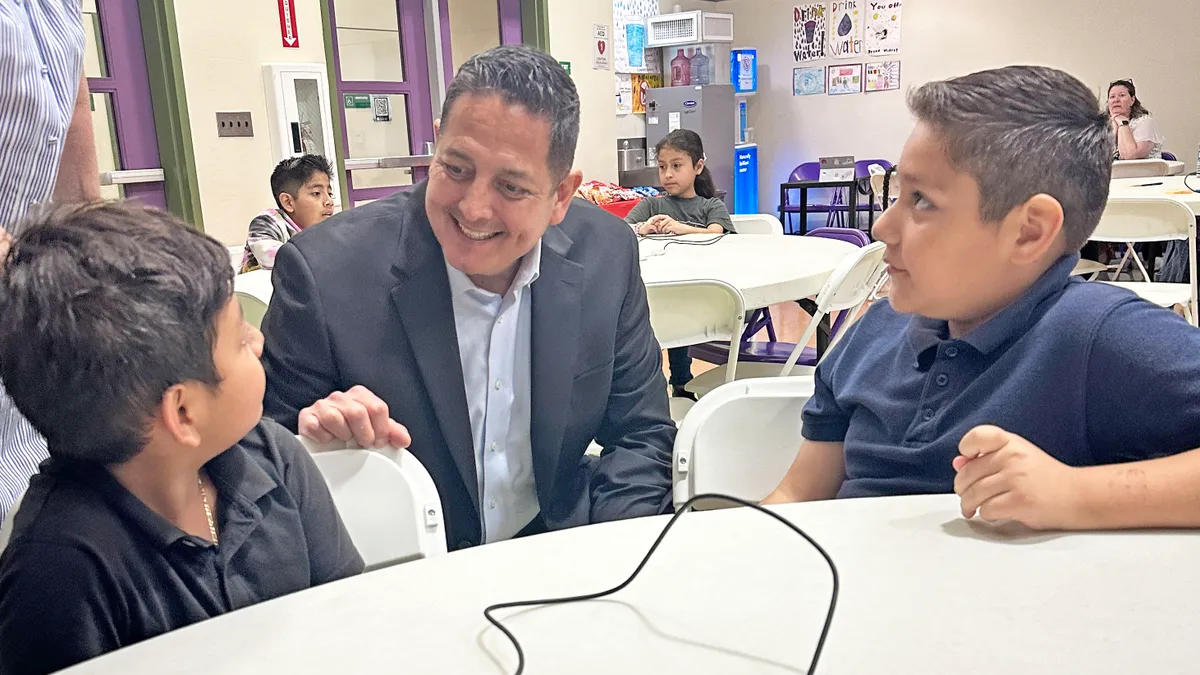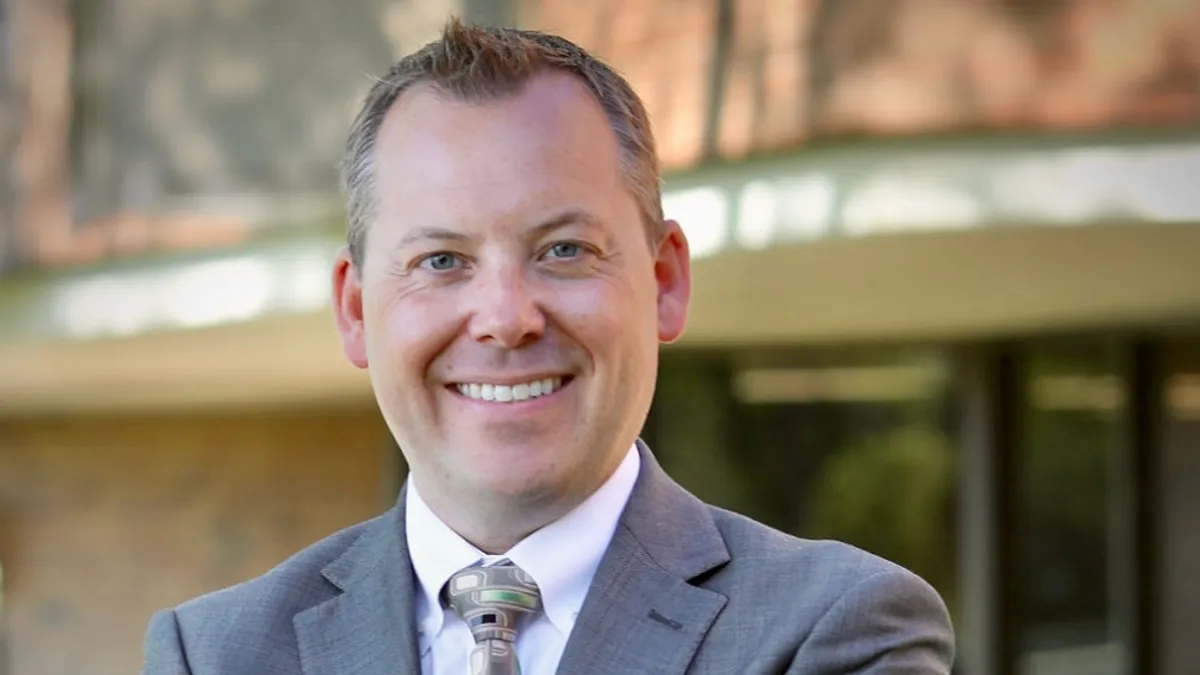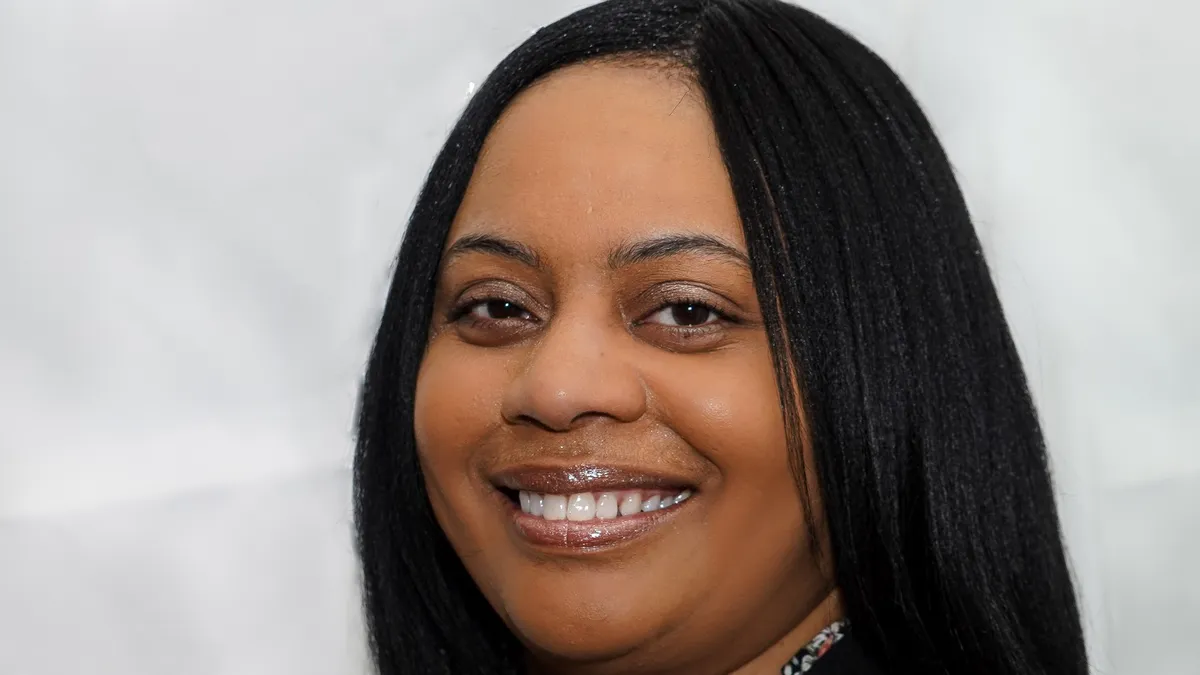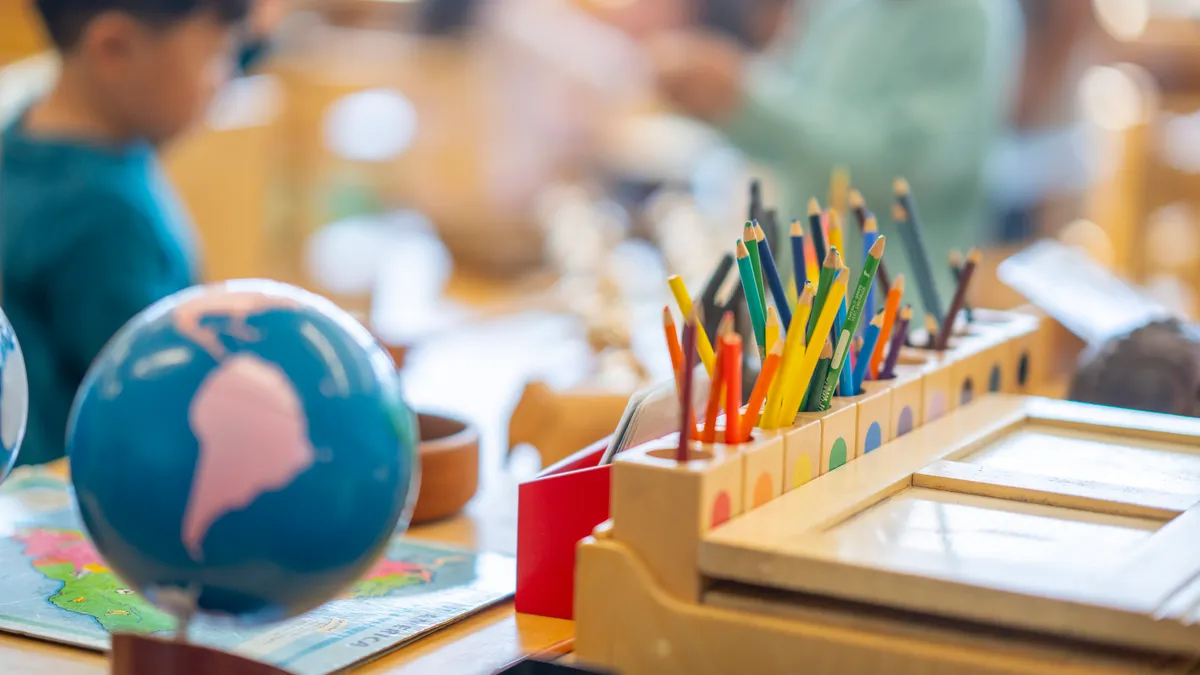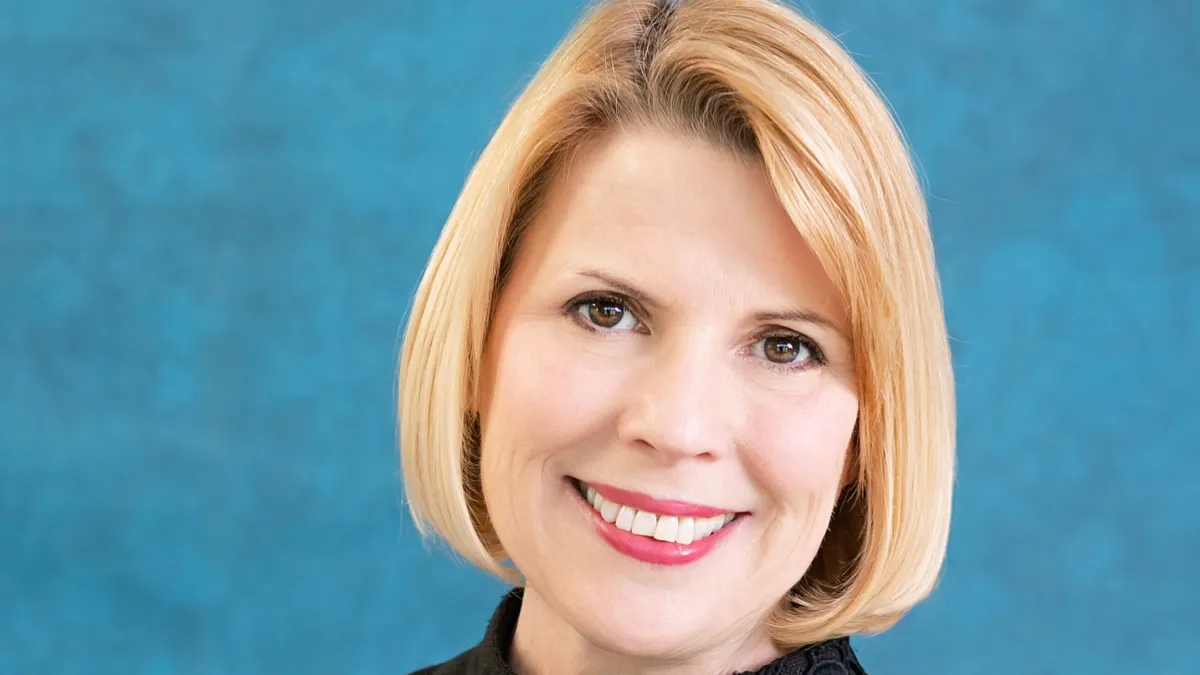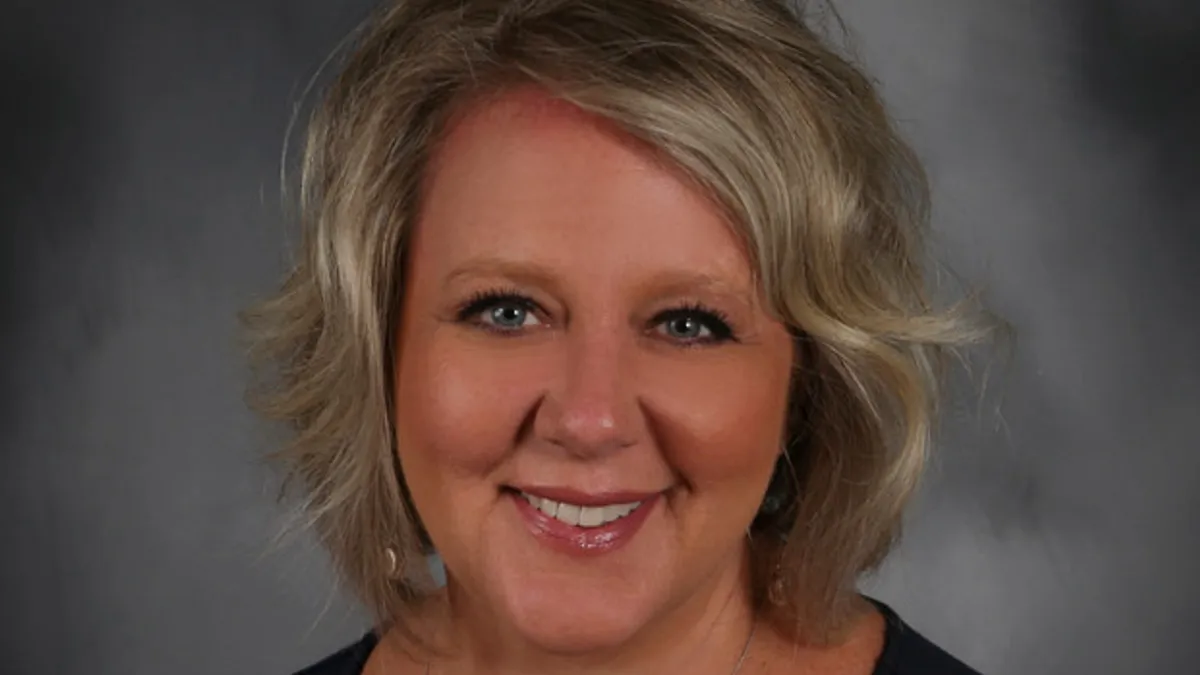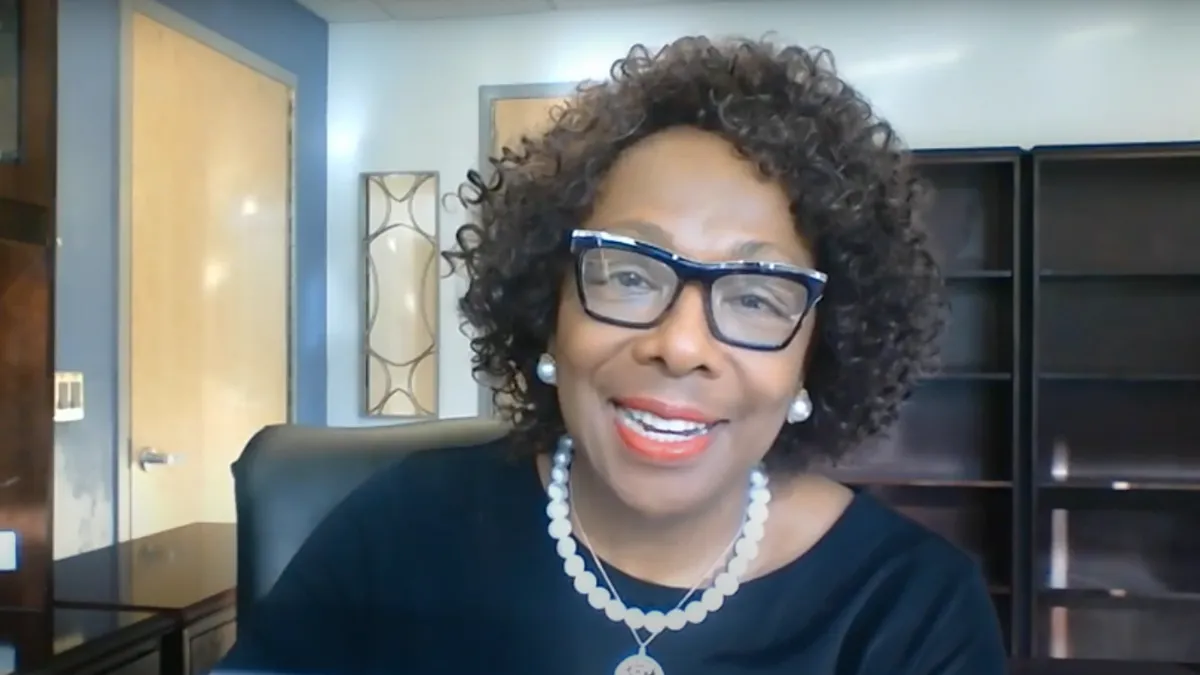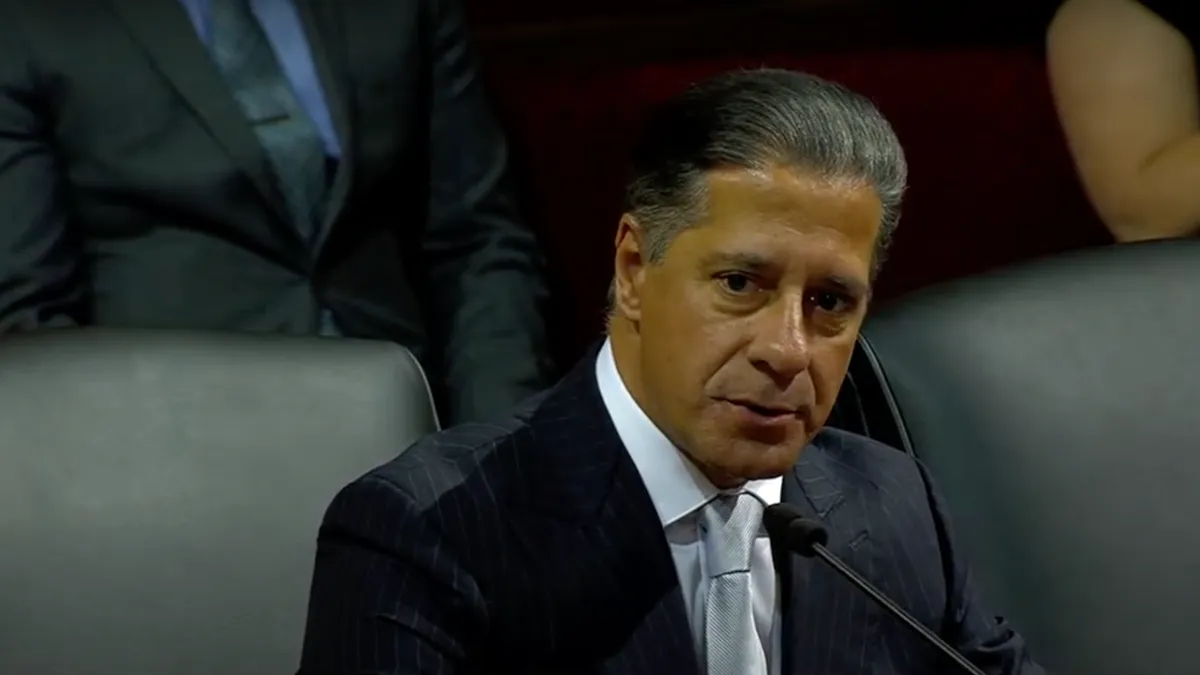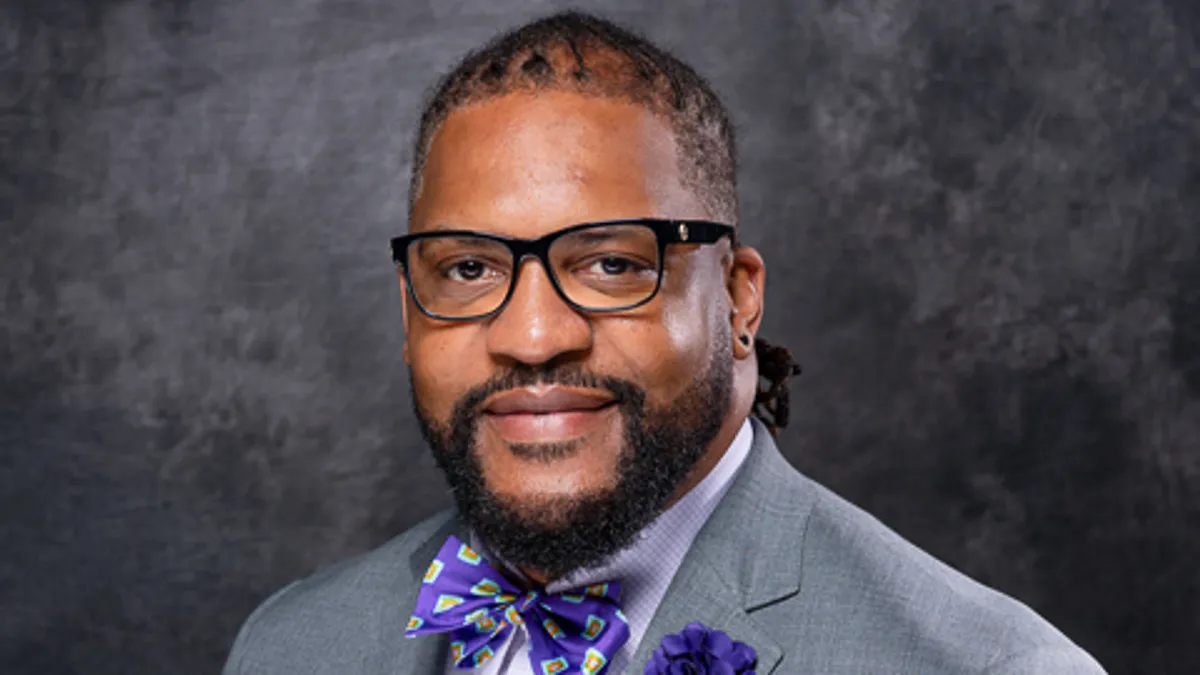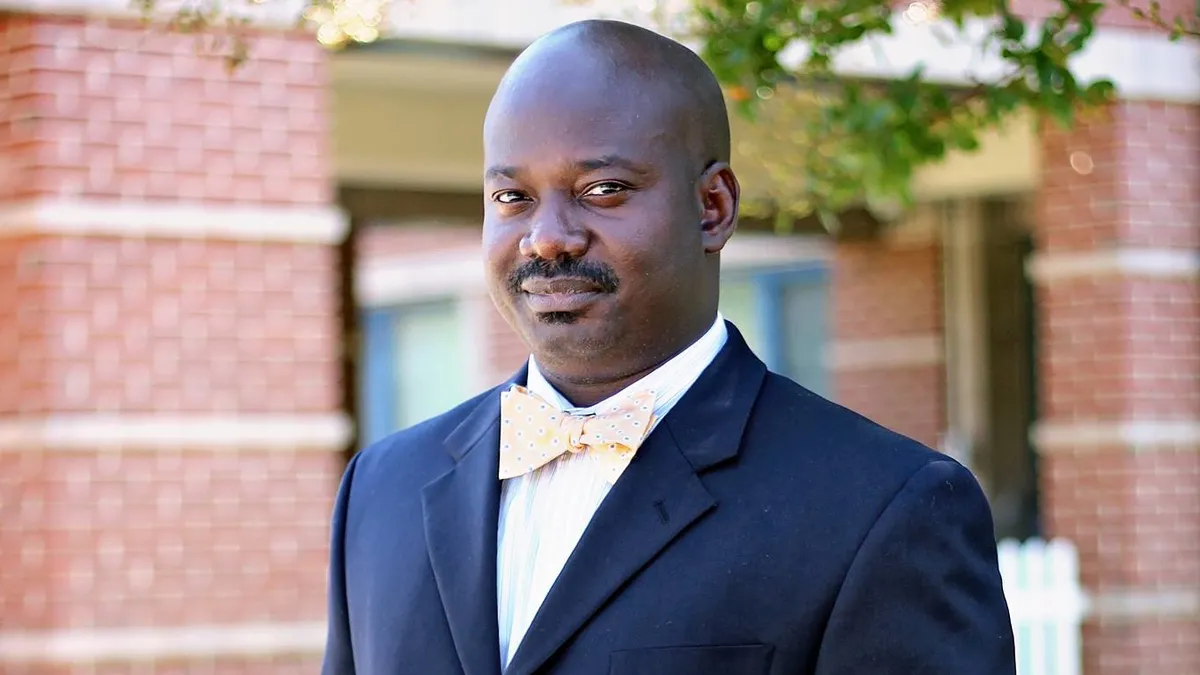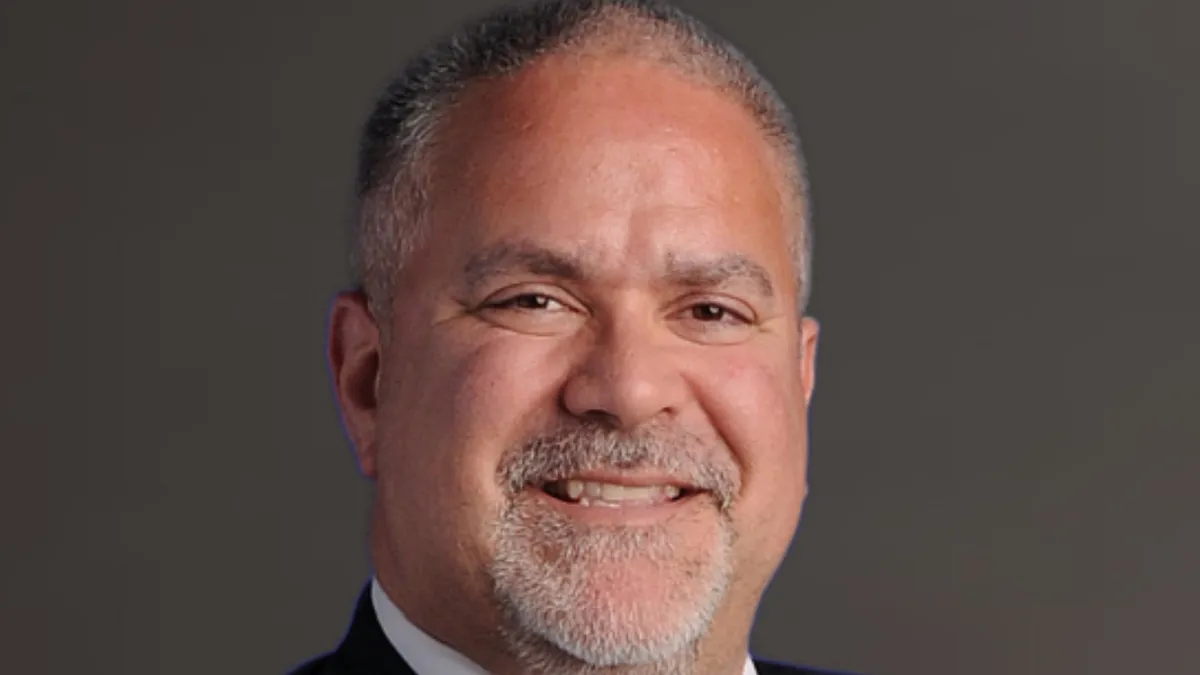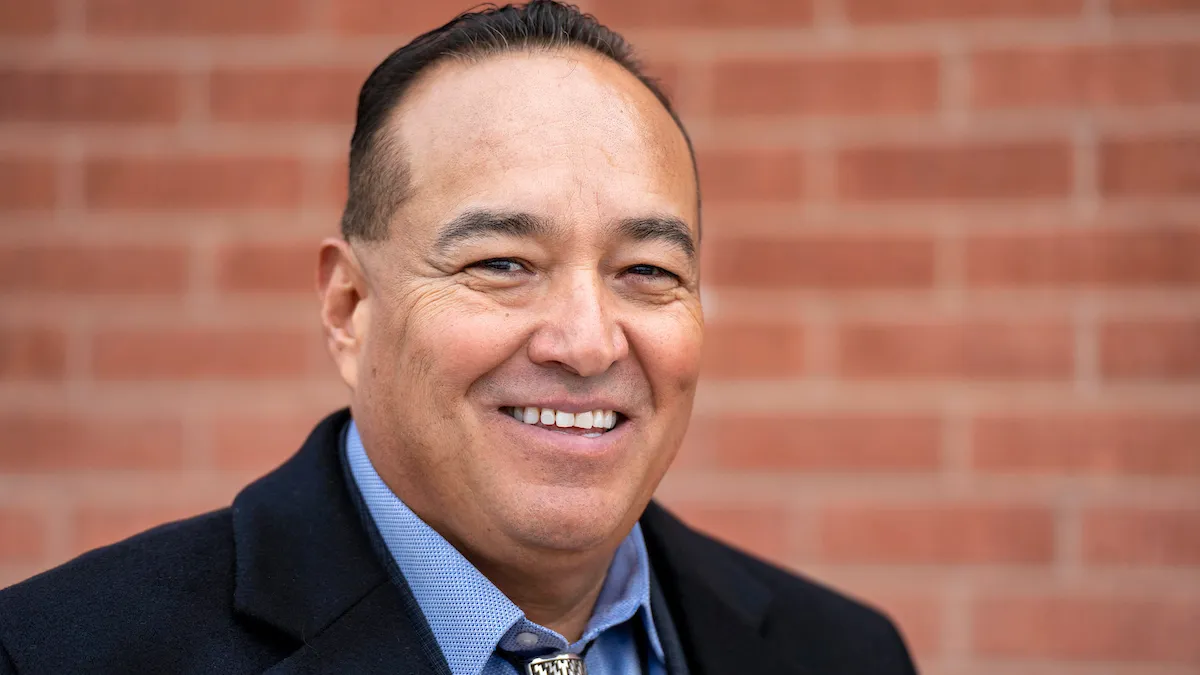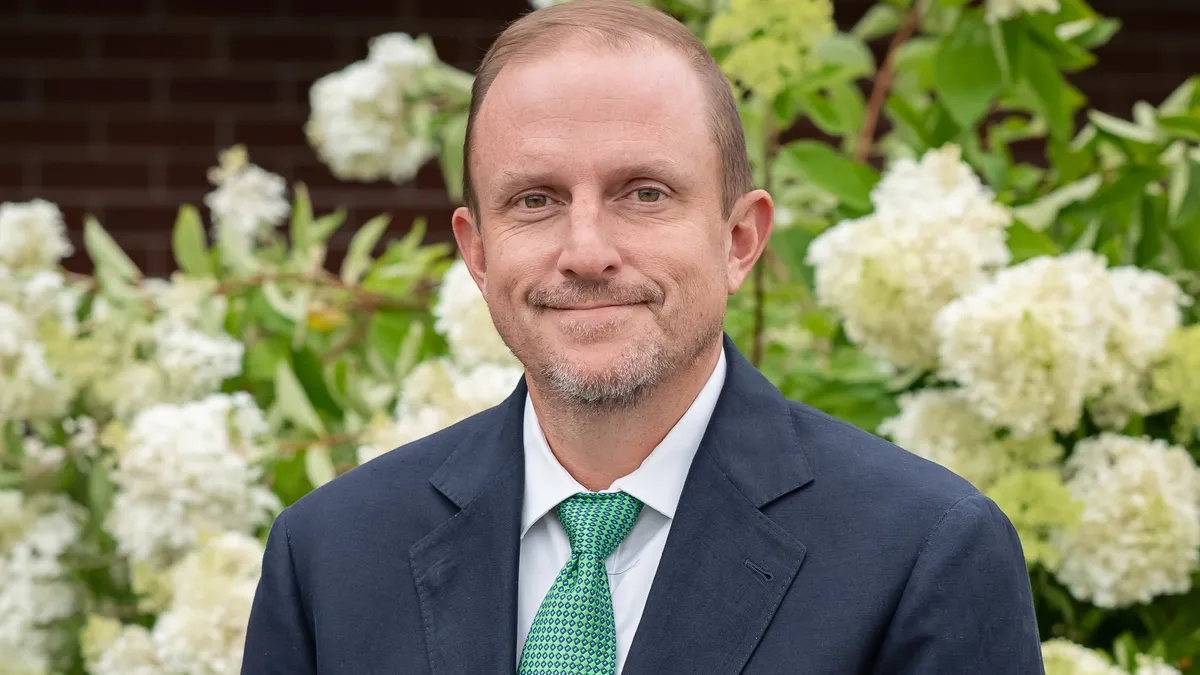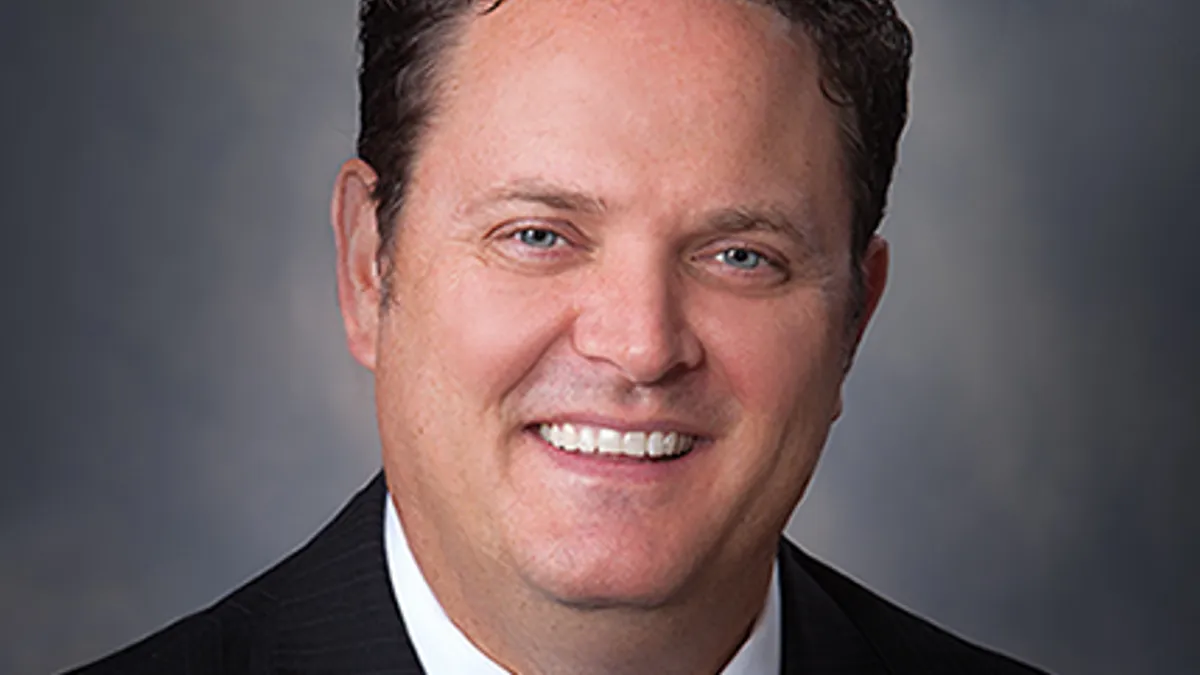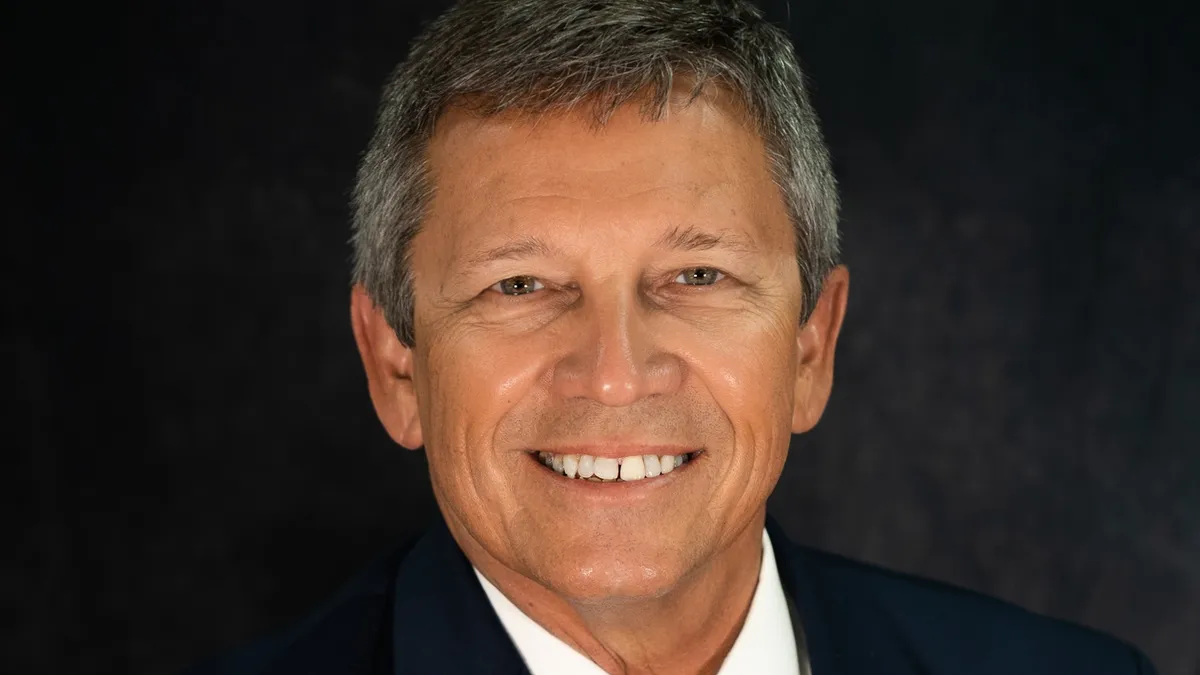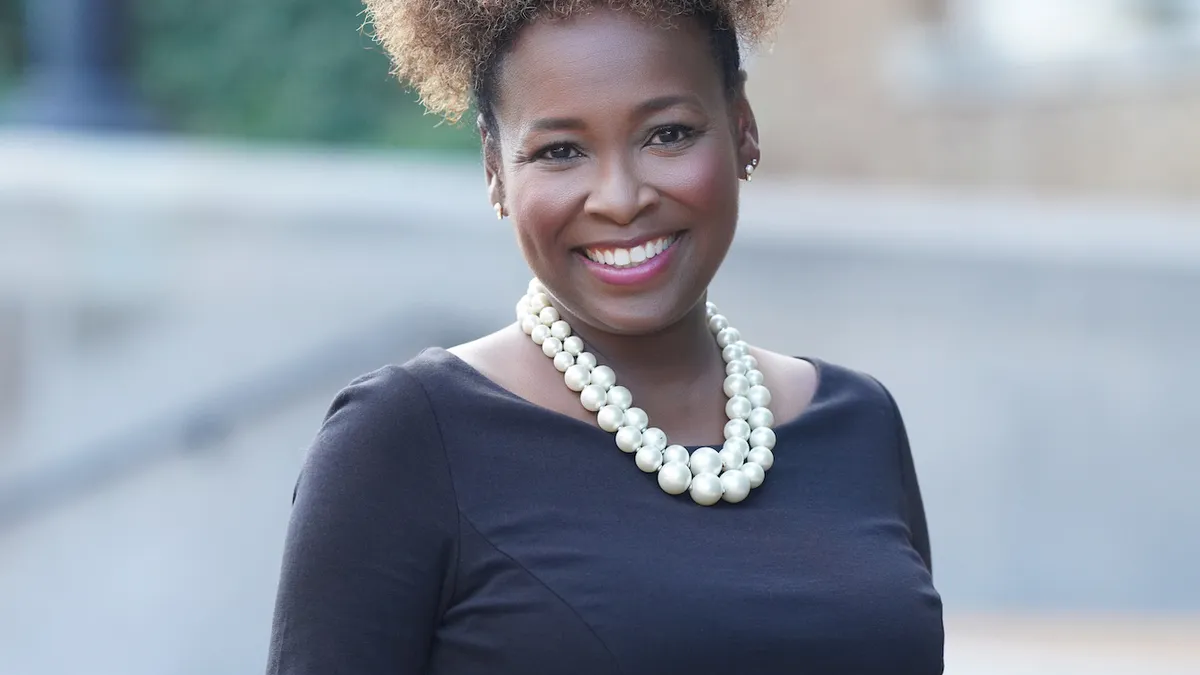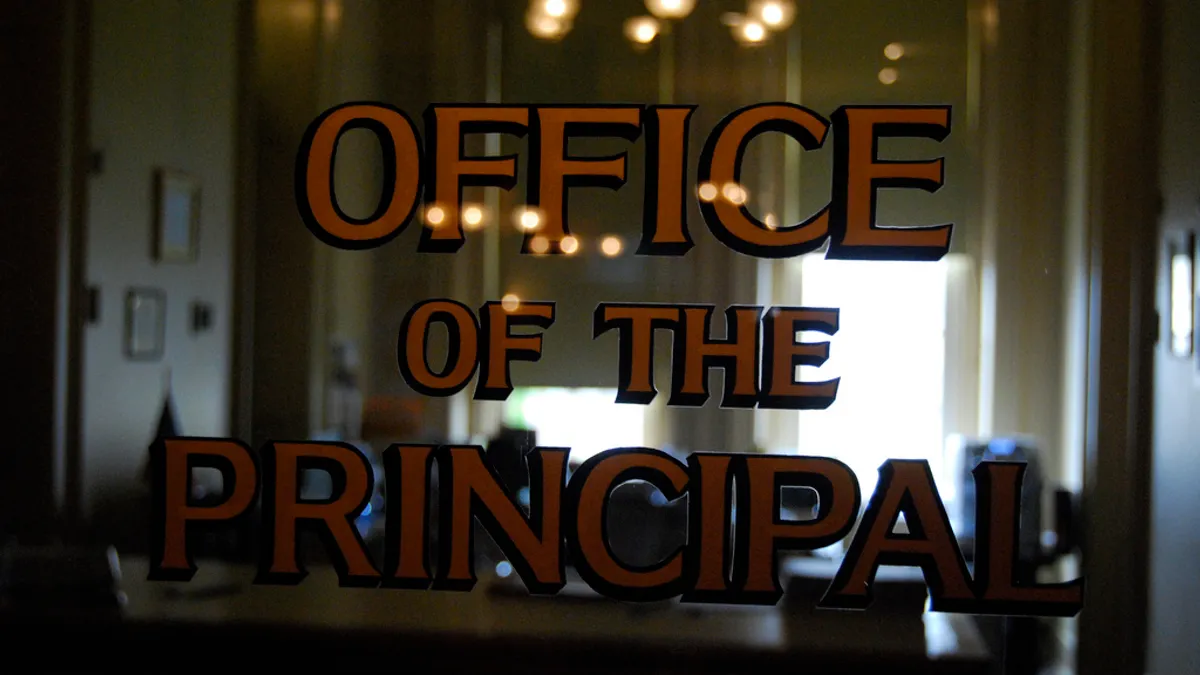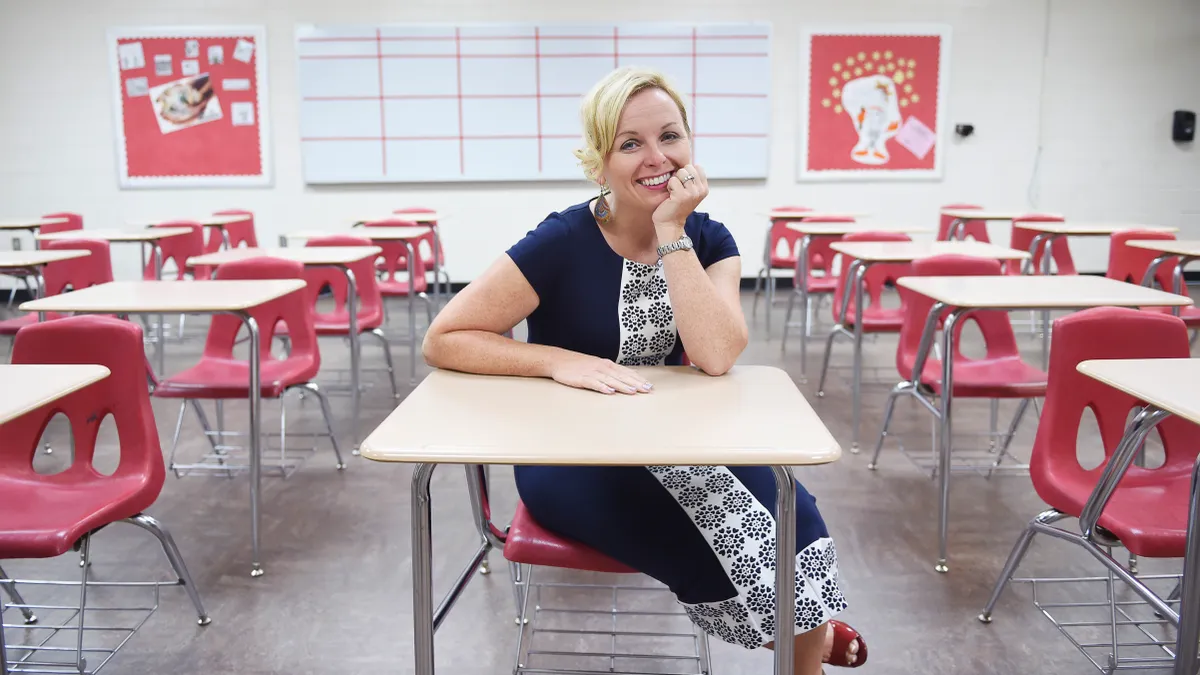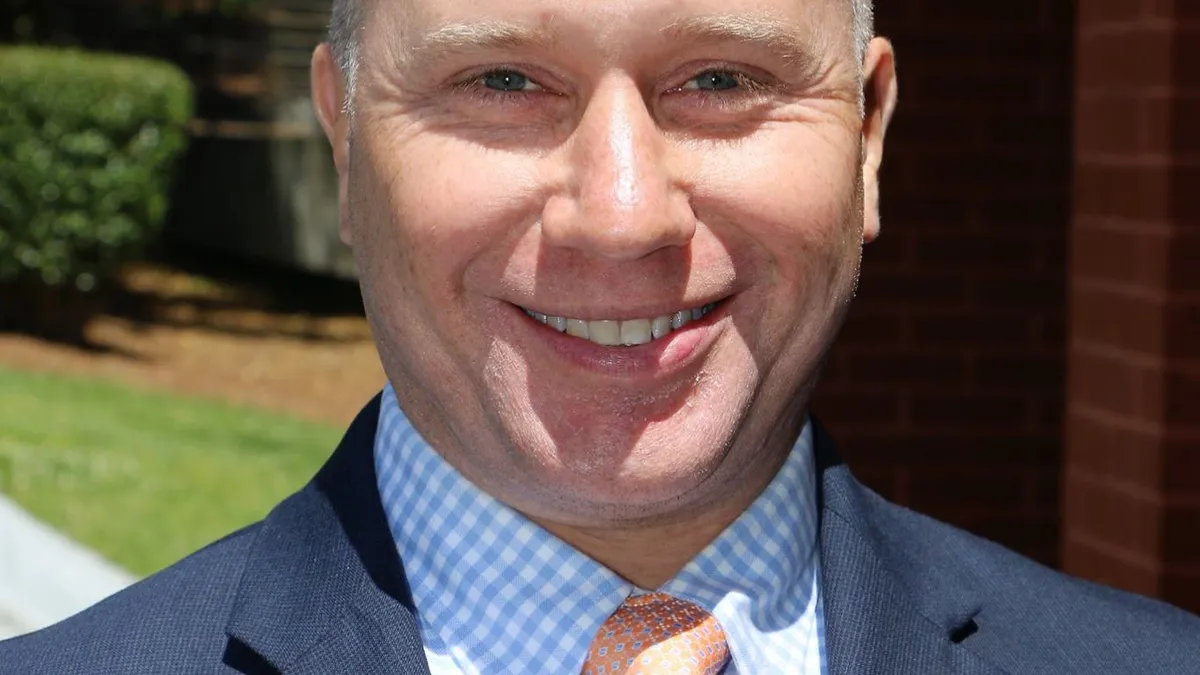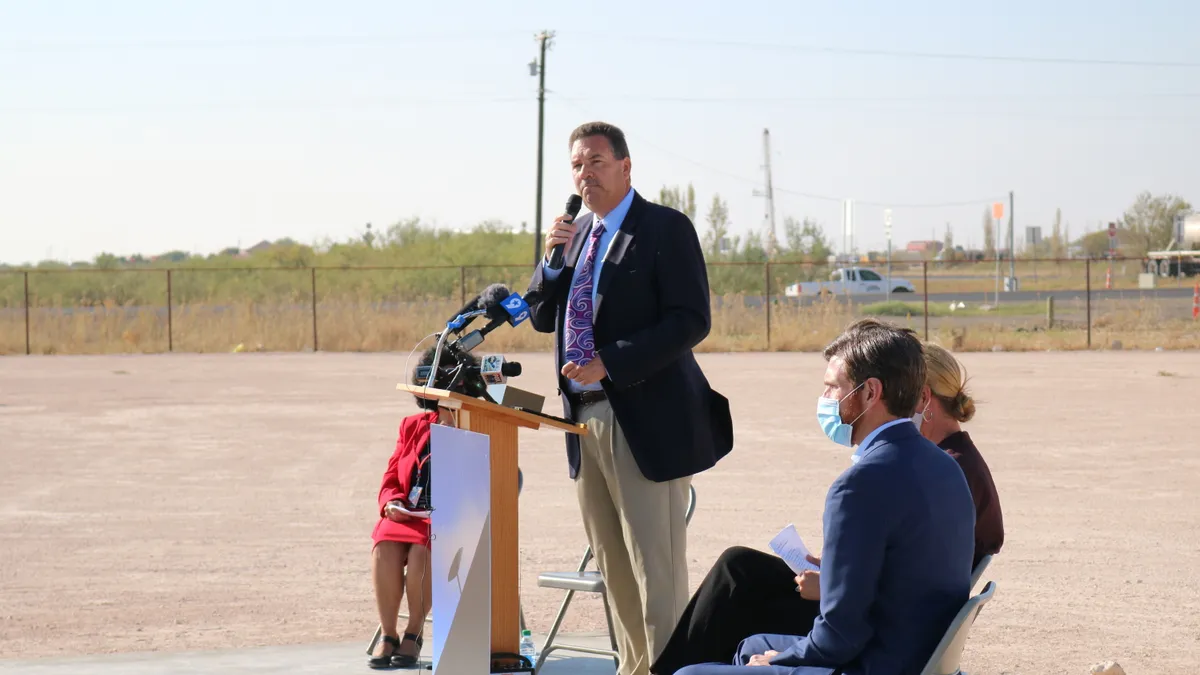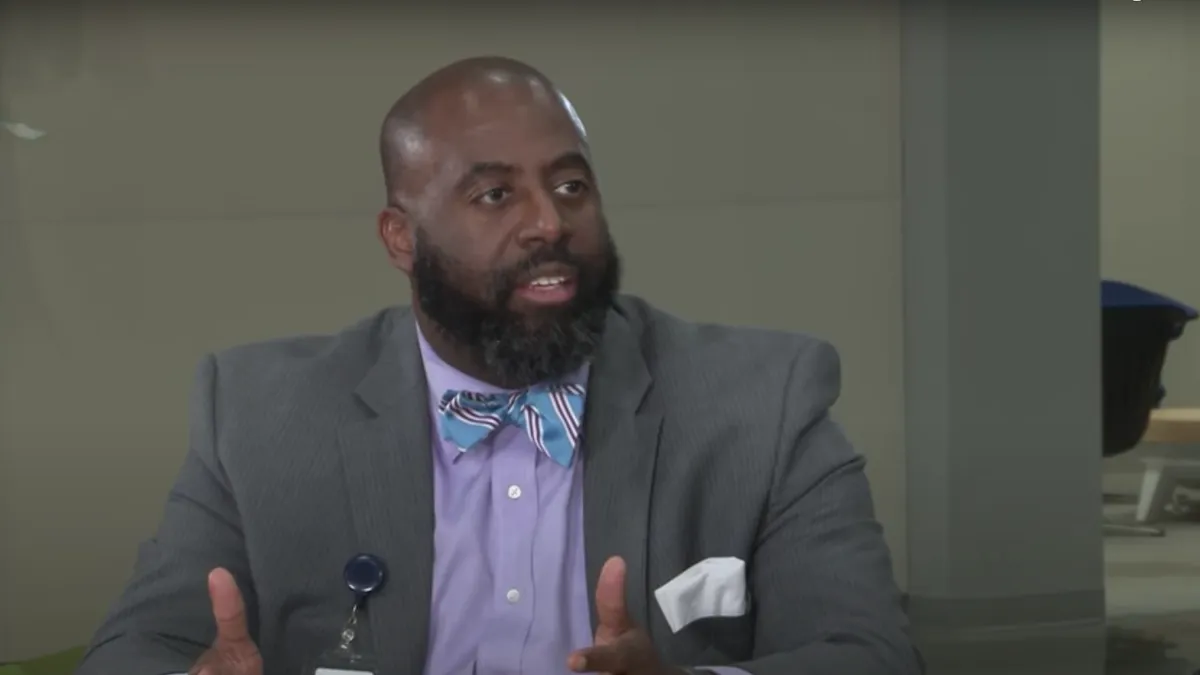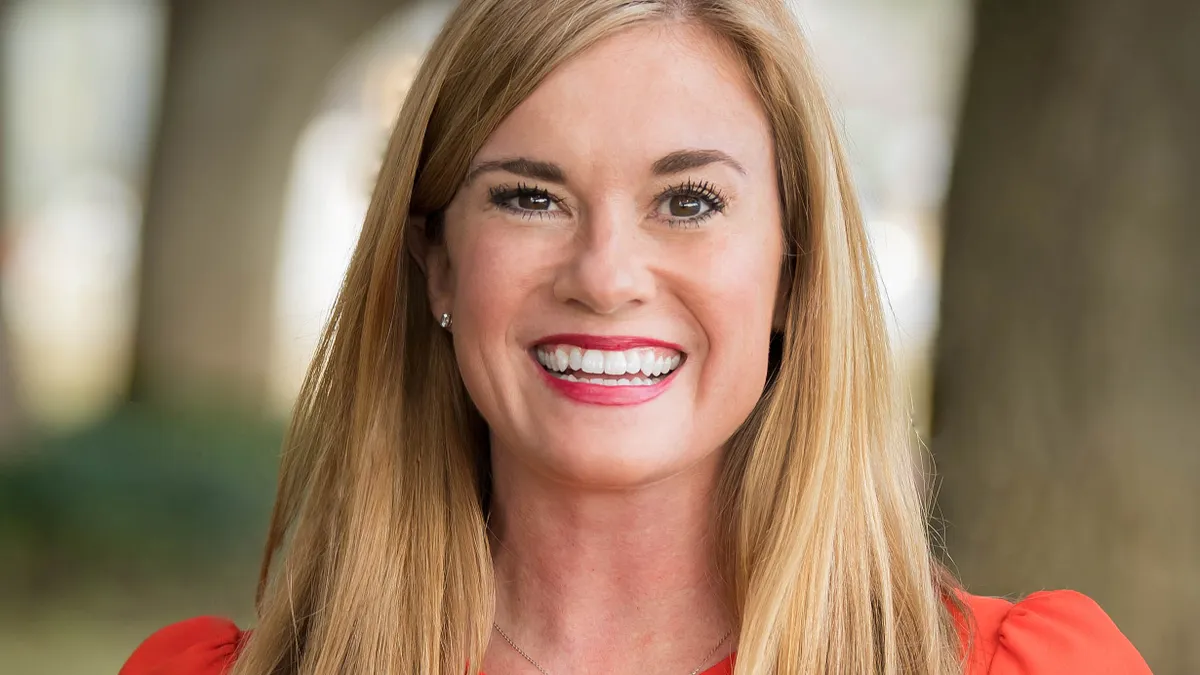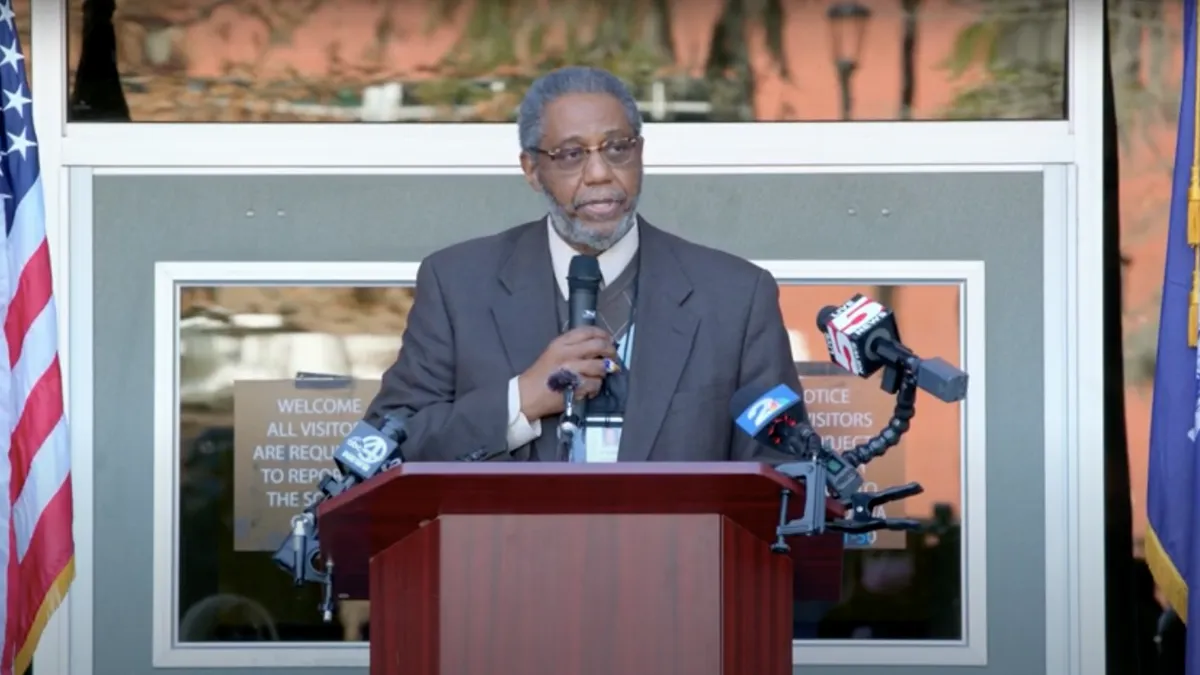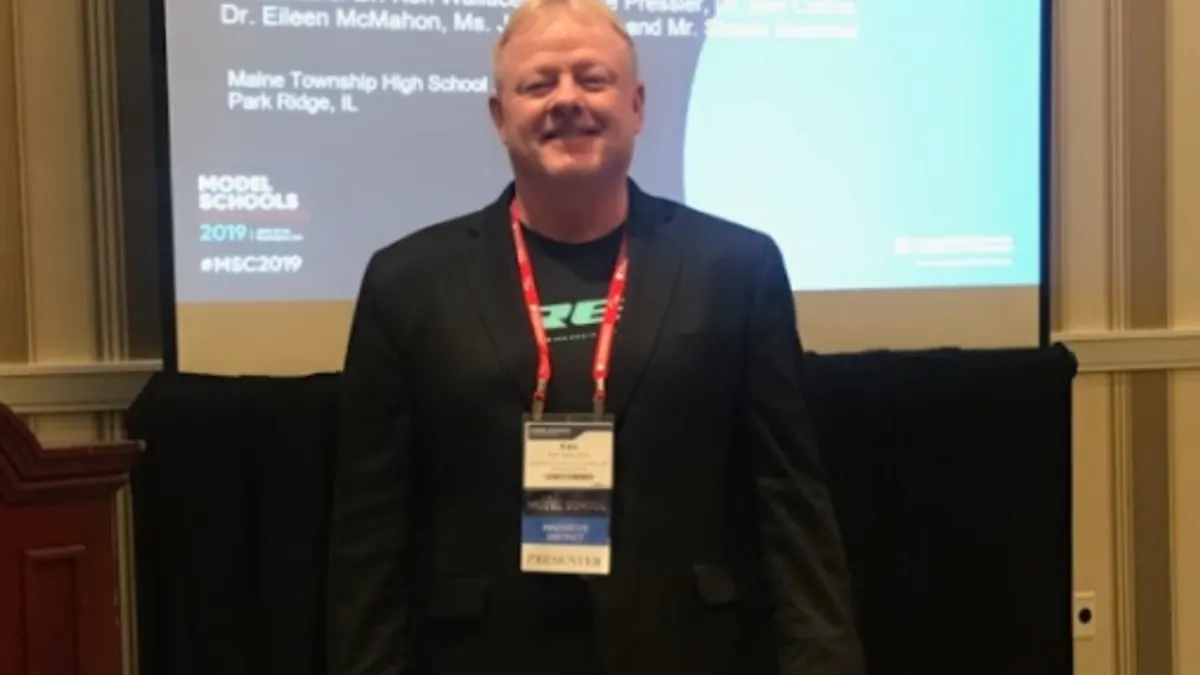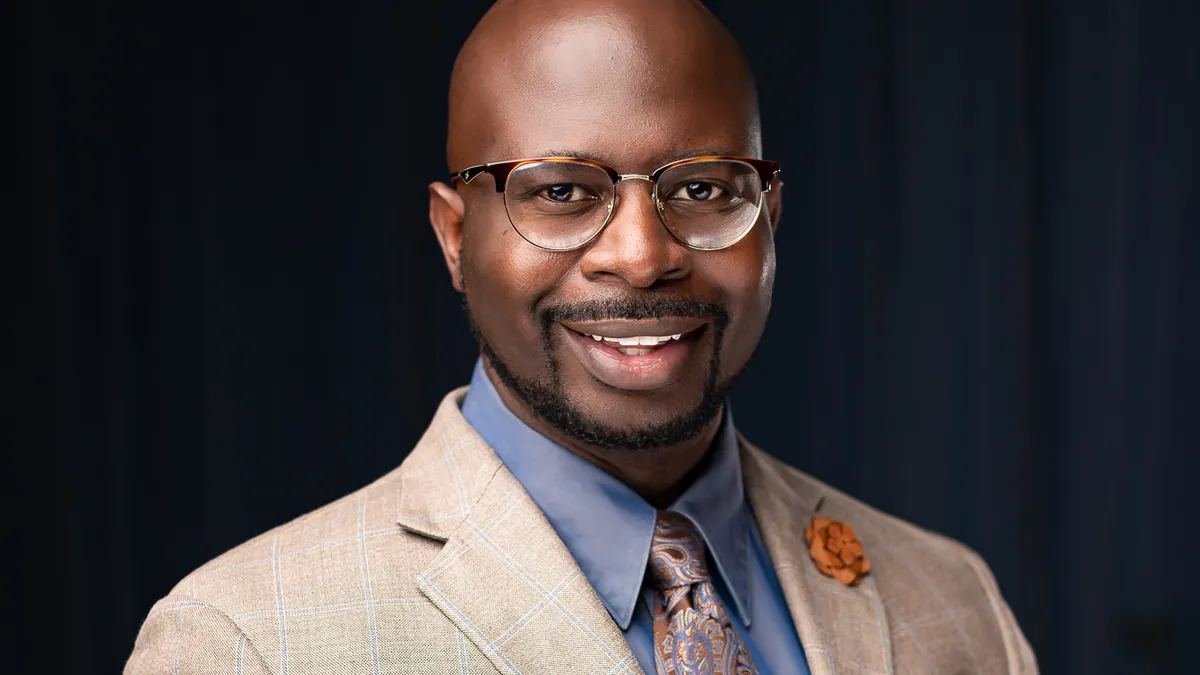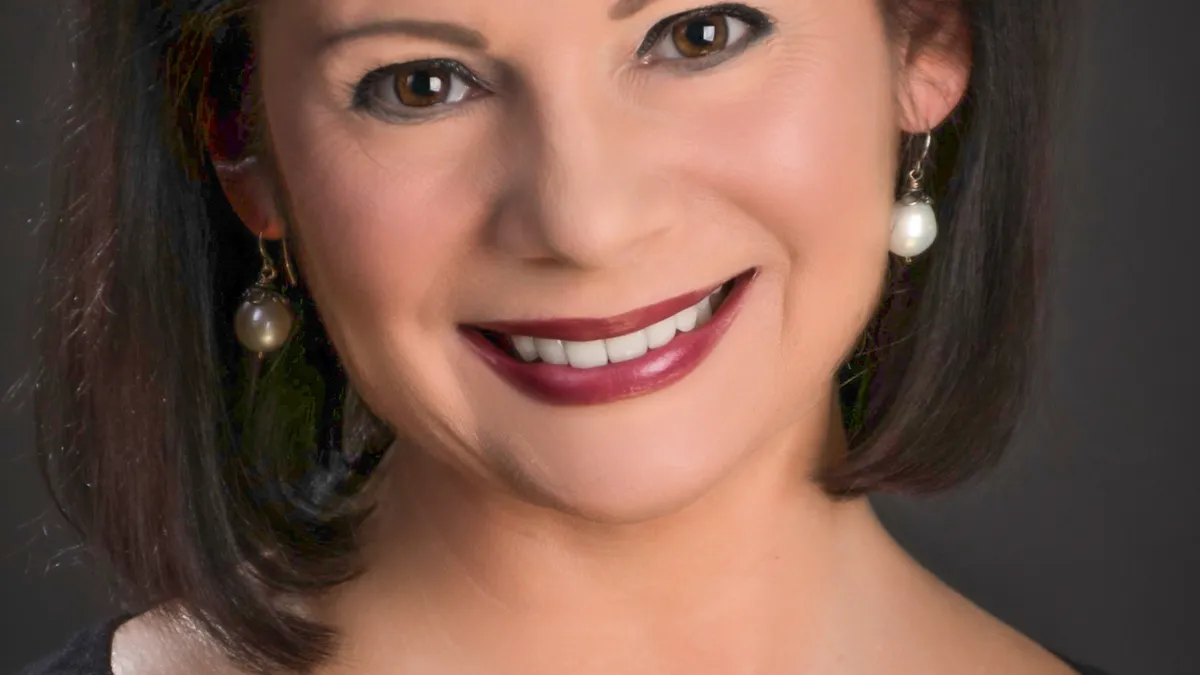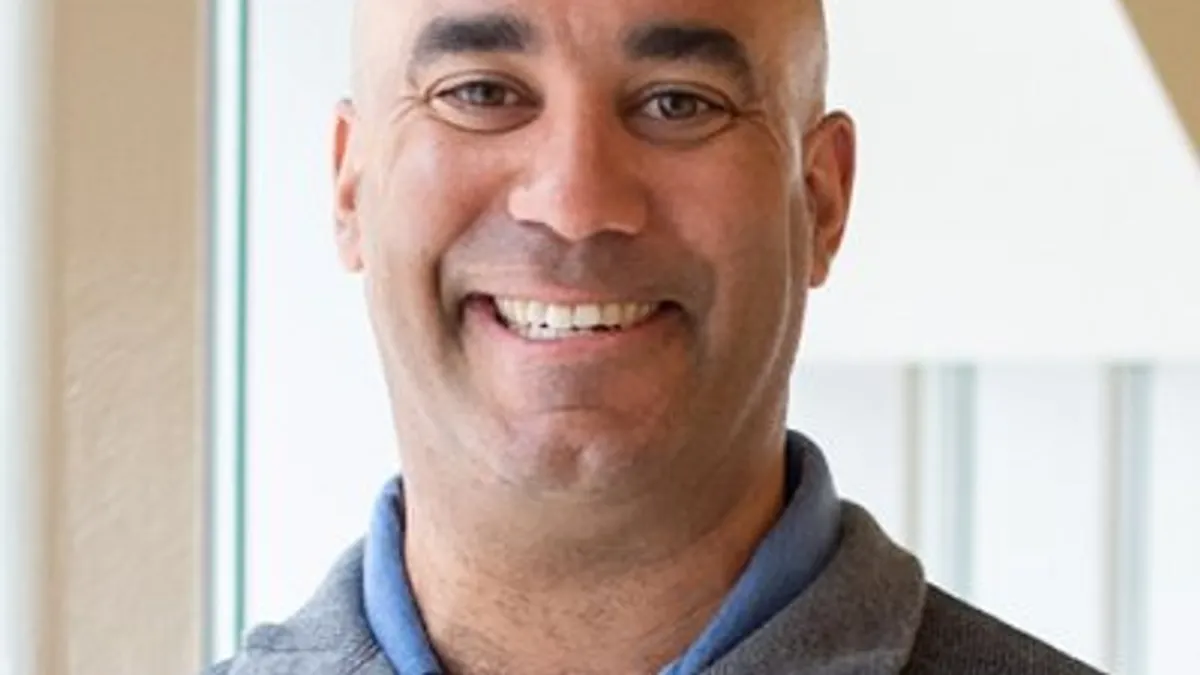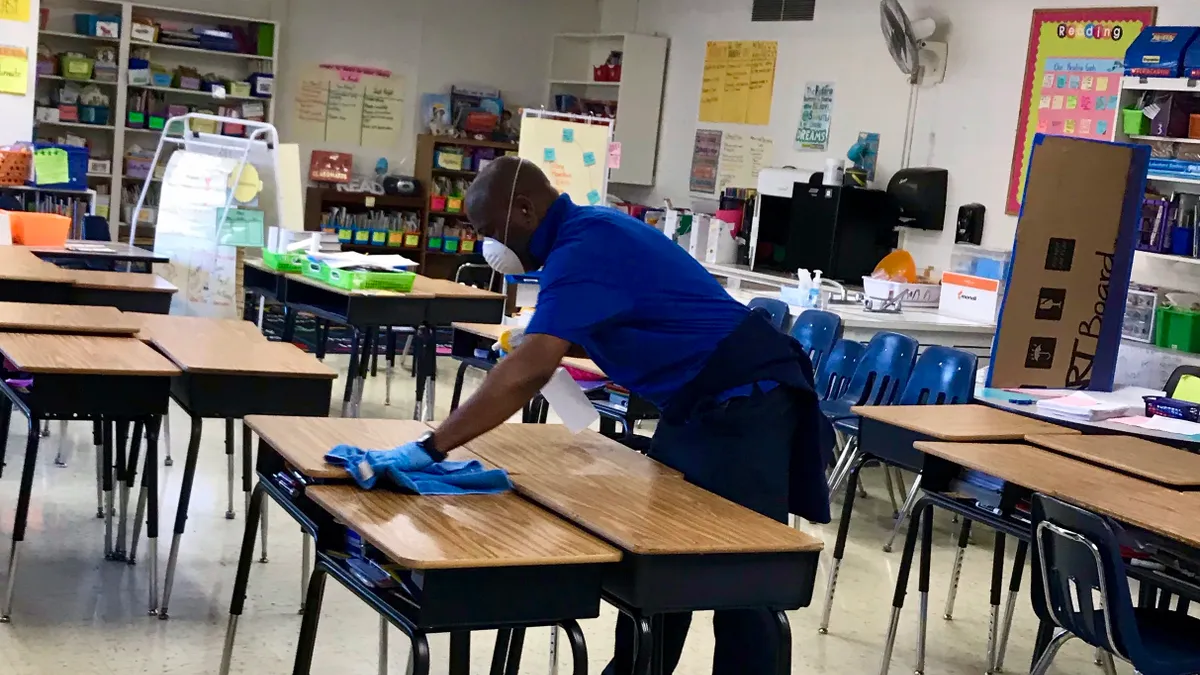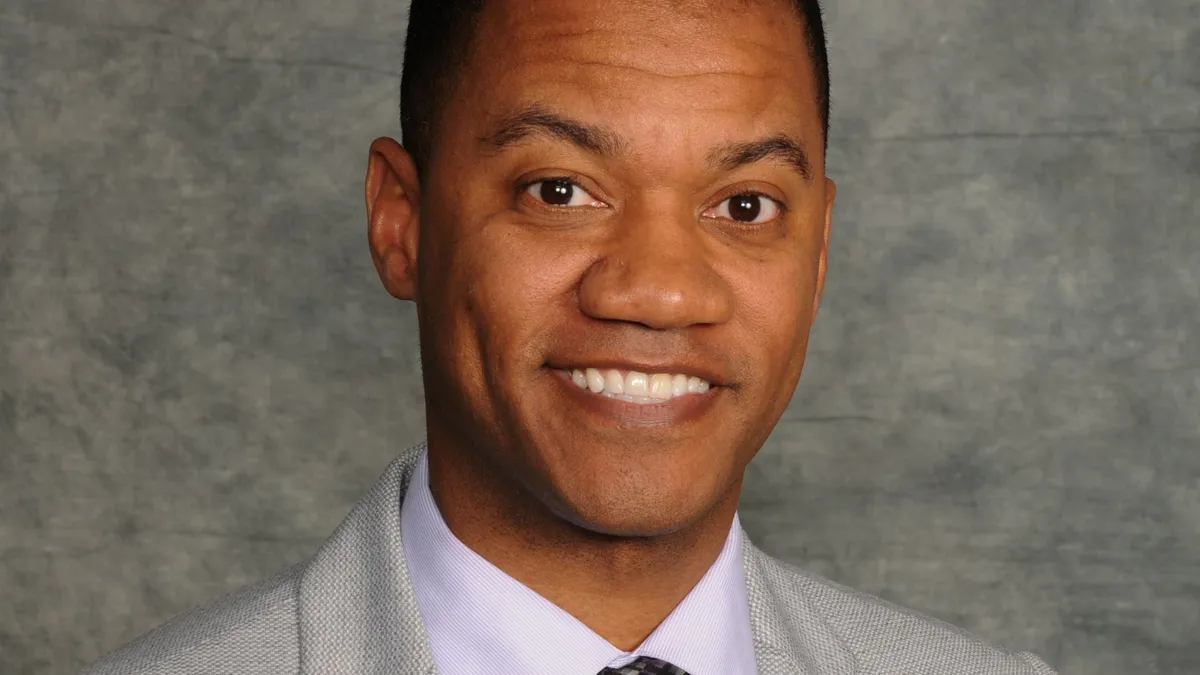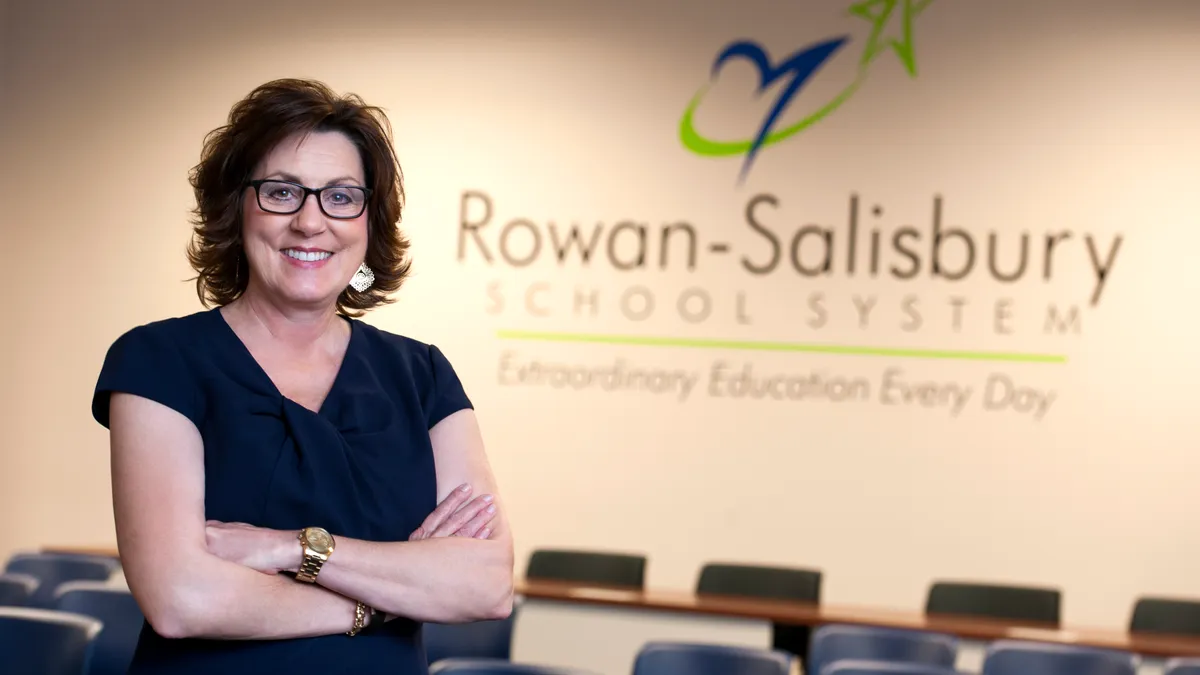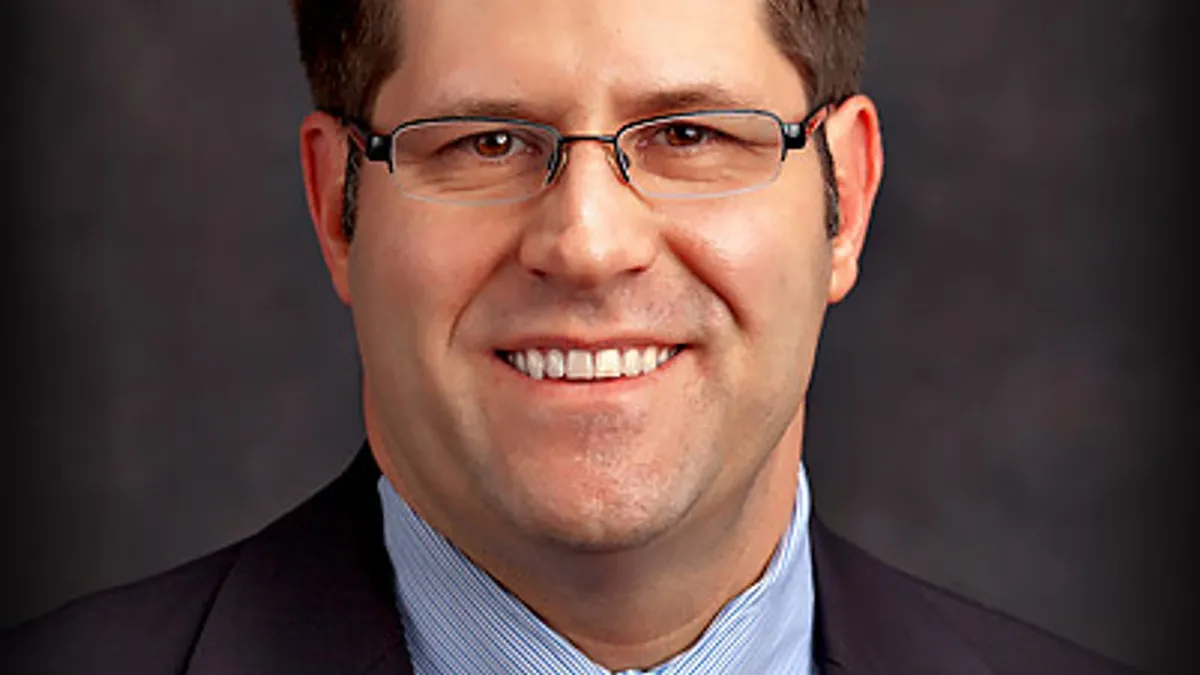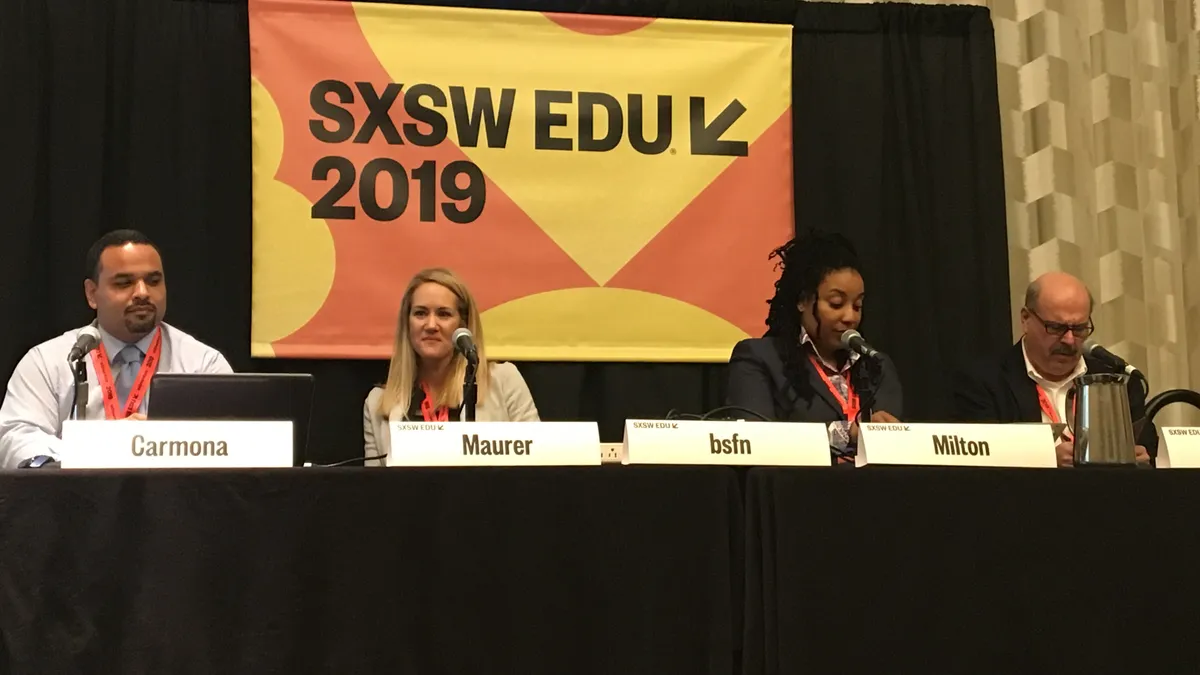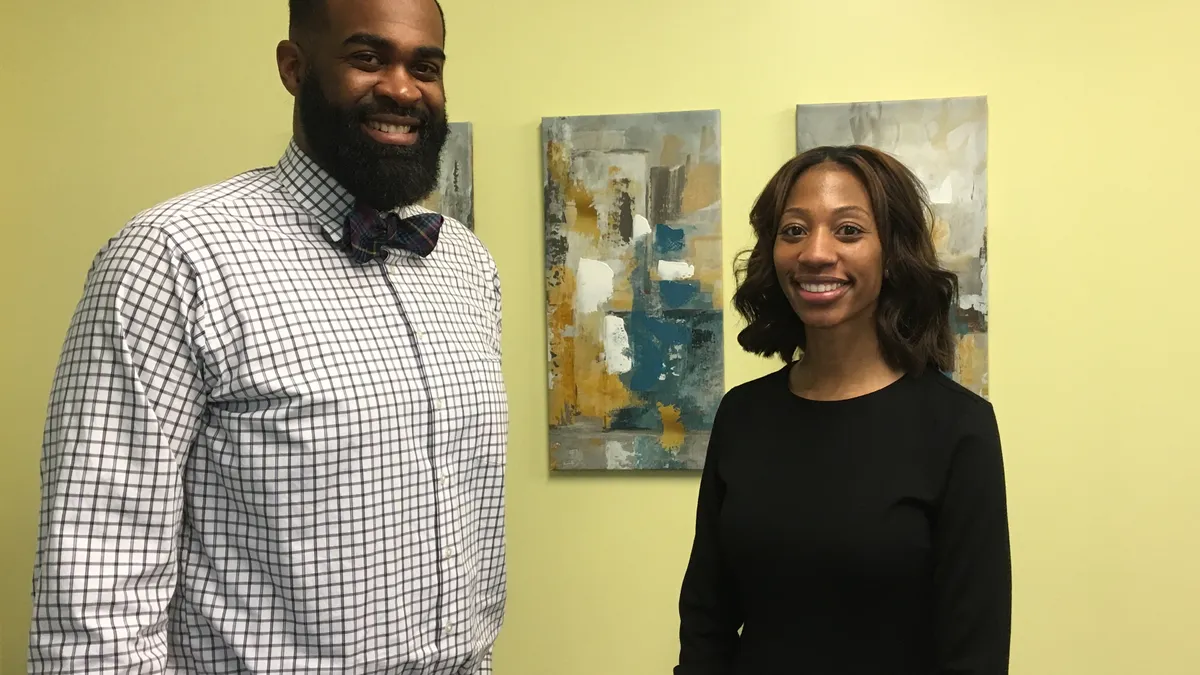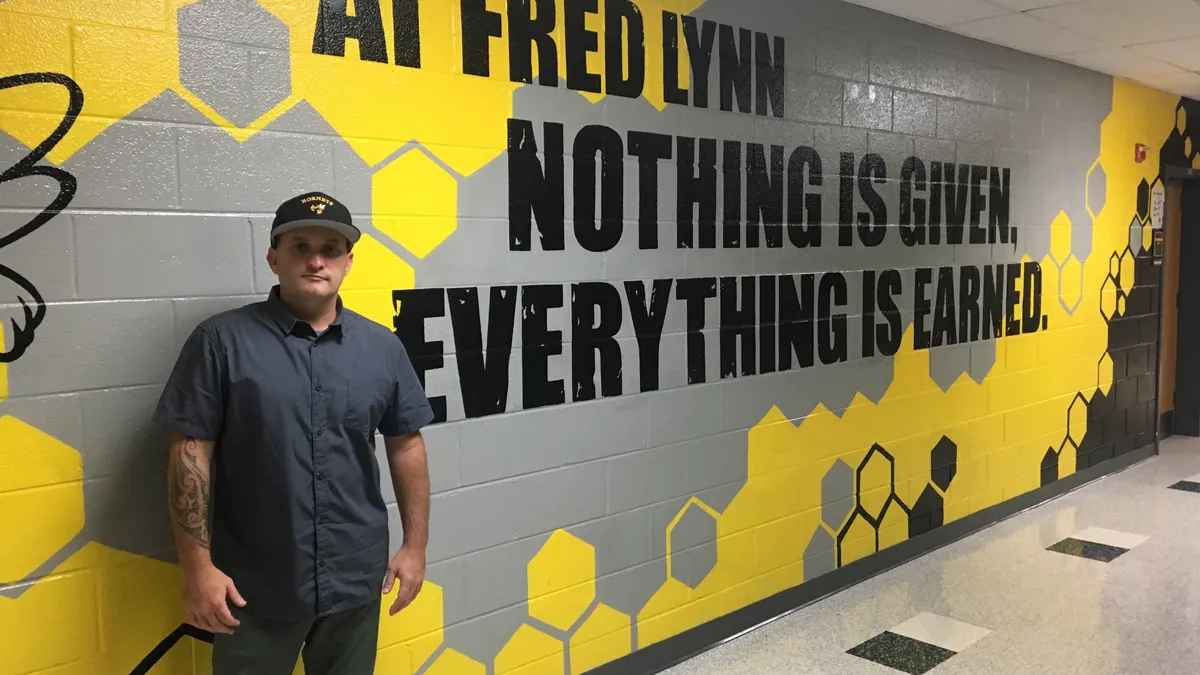Lessons In Leadership is an ongoing series in which K-12 principals and superintendents share their best practices and challenges overcome. For more installments, click here.
Located in Allentown, Pennsylvania, Wescosville Elementary School serves a diverse array of students with high populations of English learners, children with autism, and those classified as gifted. As a result, Principal Tara Desiderio has finely tuned her communication strategies and prioritized inclusive learning environments in her 12 years leading the school.
"It's a very eclectic school, and I think our kids are better for it because they really don't think twice about anyone doing anything better or different or anything in their classrooms," Desiderio, who also serves as a Future Ready Schools advisor and co-moderates #CultureEd discussions on Twitter, told K-12 Dive. "They really are embracing what everybody is doing around them."
Over the course of our conversation, Desiderio shared details on her approaches to inclusivity, keeping families in the loop, the critical role home visits play, and how she factors social media into school communication strategies.
Editor's Note: The following interview has been edited for brevity and clarity.
K-12 DIVE: With the diverse population in your school, how important is it that, as a leader, you're creating an environment to make it easier for classrooms to be as inclusive as possible for students of all different learning abilities and backgrounds?
TARA DESIDERIO: We have taken a lot of time to sit back and actually listen. I feel like listening has become a lost art these days. So we listened to what our teachers have to say about that. We've talked to our kids about what makes them feel included or what makes them feel left out. We've talked to our parents.
We try to run a lot of parent sessions, and all of the sessions that we run for anybody in the school — whether it's our kids or teachers or our parents — we try to run them from the feedback we get from that group.
We make sure our kids see themselves in the literature they read every day, so we've made sure our classroom libraries reflect all of the kids in our classrooms. We have embraced a different literacy approach that really looks at meeting kids' needs where they're at.
It's not so much everyone should be exactly on this level, even though we know there are levels our kids should be at, [but] we really try to make sure that the kids feel the challenge at their level so they can embrace a love of reading. Because we know the more they love reading, the better they're going to do across all curricular areas.
We take a strong emphasis there. We’ve had so many of our kids say things like, “Mom, we read a book, and in the book, the girl in there looked just like me.” We know how important that is and how valued our kids feel when they see that.
It takes a lot of modeling and embracing. We always say we choose our lens, and everything that we encounter in a day. We embrace both the successes, and we “fall up” with every time we stumble. So there are no times where we say there are problems. We say there's only opportunities to be dealt with when we're dealing with different situations. We just feel the more we're including voice and choice in what our kids are doing, the more successful they are.
I've also heard a big part of your approach to home-to-school relations involves doing home visits every summer.
DESIDERIO: That's something over my tenure as an administrator that has become more and more important to me. First impressions are extremely important, so I do go out to every kindergarten home.
I drop off a book and I drop off some magic confetti for them to put under their pillow so they have sweet dreams the night before they come in to us, to take any scary feelings they have away. I talk to the kindergartner and I talk to the parents, and I ask if they have any questions they haven't asked us yet.
I also give them cards to let them know what all of our social media outlets are, because we post a lot of information to our social media outlets. We've done a lot of surveys with our parents, and they have said social media is where they want us to meet them. So we use social media very heavily to do reminders and celebrations and "need to knows."
I also make sure, along with making that visit, I call every kindergarten parent before the school year starts to see if they have any more questions before they come in. All new students also receive a phone call to all of their parents to see whether there are any questions, because as a new family to our school, we want to make sure they feel welcomed and that their voice is heard right from day one. And if they have any questions, concerns or anything, we know it before they even get here.
Do you find the home visits also help improve your work to make learning more equitable for all students?
DESIDERIO: I do. Sometimes some of our other teachers will come with me. Sometimes I go by myself or my kids will join me and we go do that. Sometimes my guidance counselor will come, or my ESL teacher will come.
Then we know where the kids are coming from. We know if there are a lot of siblings in the home, or we kind of get a gauge that they may need a couple extra things. Or the parents may express to us that there's some extra need or some extra things that we may need to think about as a child's coming in.
It's a safer space than when we're asking them to come into our space for the first time, because we're in a space where all of our families feel most comfortable — their homes. So they generally tend to be a little bit more vulnerable and share some of that information that just helps us to help their children succeed even more.
During the pandemic, since you have high populations of students who are English learners or who are on the autism spectrum, how did you make sure they remained included and engaged in the learning process?
DESIDERIO: Our ESL teacher and all of our special ed teachers were always on Zoom with our parents. They would often get put into breakout rooms. We do a lot of small group work here, regardless of if we're in person or not. So our kids were put into smaller groups to work with like-level learners and in spaces where they felt supported and comfortable.
We house a lot of students who are nonverbal, and some who have some behaviors and things. They weren't able to stay on Zoom as long as some of our other students, so we worked with the parents to kind of gauge what they were hoping for their child to do during that time and what was doable for the child and the family.
We sometimes chunked their information, and they would get some time with their teacher and then some time off where someone would work with them and there were tasks that were given. We were often dropping off different supplies for students so they had those and had the manipulatives and things they would need to be successful.
We actually as a district took on a lot of different programs where there were more interactive opportunities for students over Zoom. And then our teachers, like our speech therapist and our occupational therapist, tried to find ways they could actually work with the parents so they could kind of build in those opportunities to the child's day.
The parents were so receptive and so thankful for the opportunity to have that time to then be able to work with their child at home. They actually knew what we were doing here in school that [they could then do] at home, which, again, was another silver lining for us. It gave us the opportunity to kind of transfer that and send videos home and say, "This is how we worked on this, and this is how you can work on it if your child is struggling at home with it or you're trying to master a skill."
To circle back to social media, you co-moderate the #CultureEd chats. What can educators gain from participating in those?
DESIDERIO: That space is [designed] to be a safe space for educators to take risks and feel like they could be more vulnerable and put ideas out there and ask questions. And [it's one] where we know we're going to be giving feedback and following up with the people who we feel are part of our #CultureEd community and family online.
That community and family really bridges outside of that chat. There are many people we've met through that chat opportunity who we have now worked with one-on-one. I'm here in Pennsylvania, and I regularly will talk to another principal in California. We worked together on how we were reopening our schools and [related] ideas because they were closed longer than we were. When he had to reopen his school, we gave ideas back-and-forth on how that would happen.
So it's not only that it's that hour or 45 minutes of a chat. It's the relationships we build outside of the chat, as well. It's a great learning experience while you're doing it, but [it's also] after the fact, the amount of people who reach out and say, "Hey, this was a great idea. I saw that you posted this. Can you tell me more about that?"
For leaders who might be a little hesitant to dive into embracing social media for school comms, what advice would you give them?
DESIDERIO: Start small. Ask your parents what they're looking for and where you can meet them best. Just start with that one.
Our parents said Facebook was the top place we could meet them, so we started there, and, as long as we had permission to post pictures, we would post pictures of the kids. That's how we got many of our parents there to start — we would post celebrations the kids had and any kind of activities that were going on throughout the day so the parents got to see regularly what the kids were doing.
They felt like they were part of our regular school day. They knew when we were celebrating different things throughout the school, the way we celebrate kids' birthdays, the way we celebrate teachers' birthdays, the way we celebrate accomplishments.
And also, it was a way to give parents information. Last year, pre-pandemic, I started doing videos for our parents to explain a little bit more how things were going to run and showing them different things that would happen across our school. They really were positive about that.
So just take one step at a time and always respond to what your parents are asking for. Don't always go off of what you think parents need. If you ask them first, it's easier to respond. It goes back to that active listening and what people are telling you, and then responding to what they've asked for.


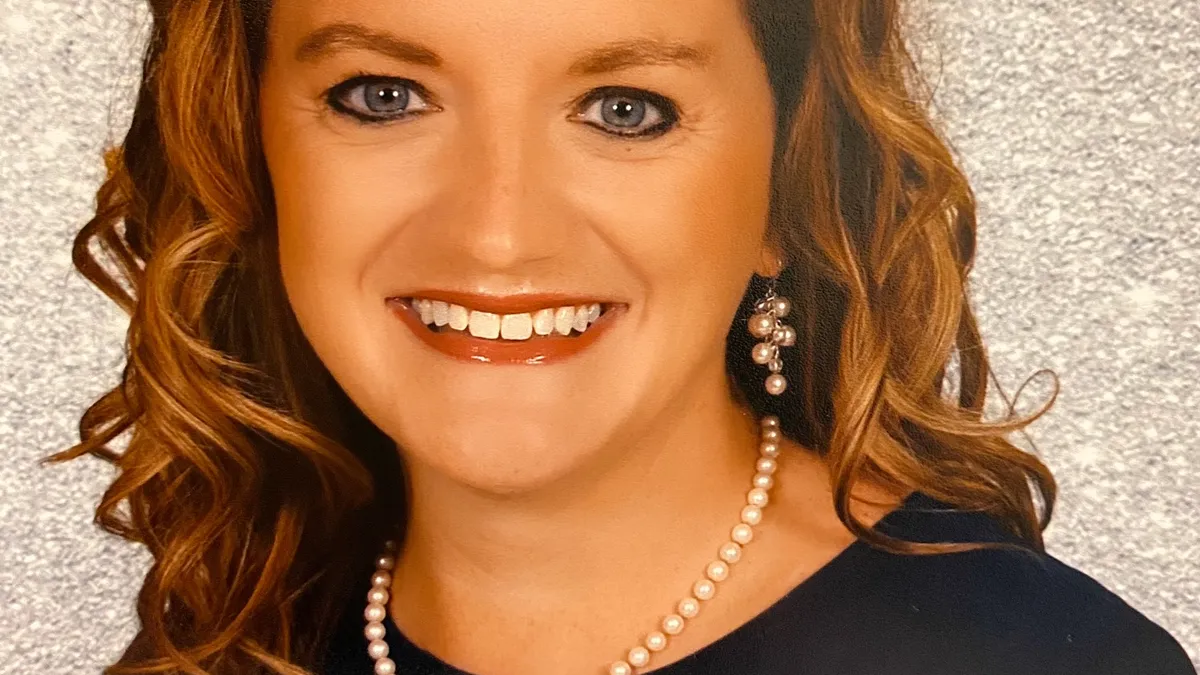



 Dive Awards
Dive Awards



